The morning walk on 28th April 2019 is very nearly sold out so I have added an afternoon session startng at 1pm. Tickets are available on Eventbrite price £12 each, tickets include hot drinks and cake at Debbie Bryan after the walk.
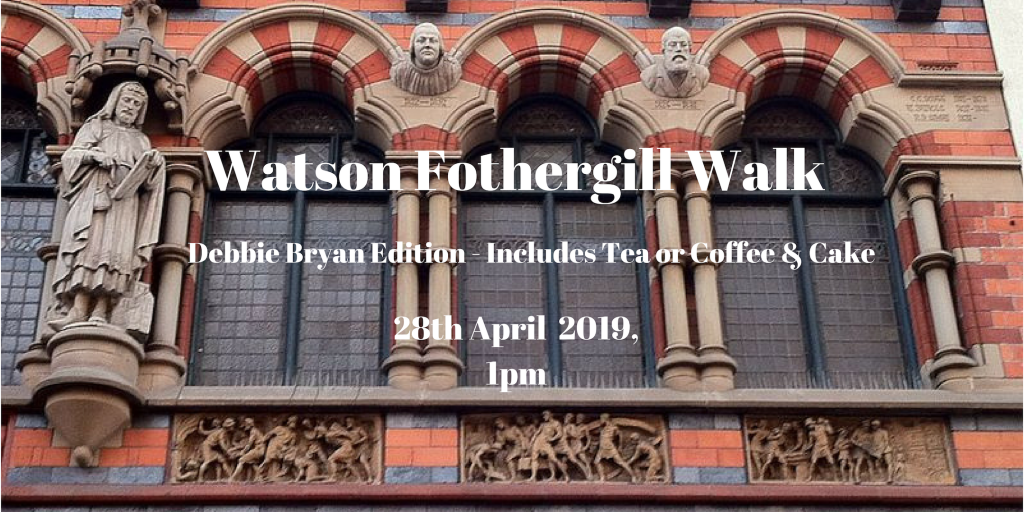
Guided tours of Nottingham
The morning walk on 28th April 2019 is very nearly sold out so I have added an afternoon session startng at 1pm. Tickets are available on Eventbrite price £12 each, tickets include hot drinks and cake at Debbie Bryan after the walk.

Tickets are now available for two new dates for the Debbie Bryan Edition of the Watson Fothergill Walk. The new dates are both Sunday mornings, with a 10am start on 28th April 2019 and 26th May 2019. Tickets are £12 each and include tea or coffee and cake at Debbie Bryan in the Lace Market at the conclusion of the walk.
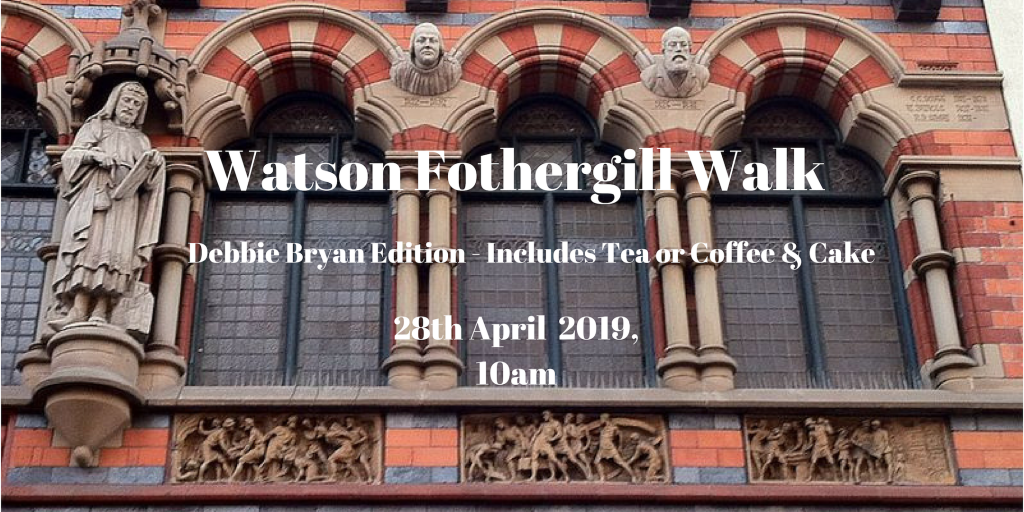
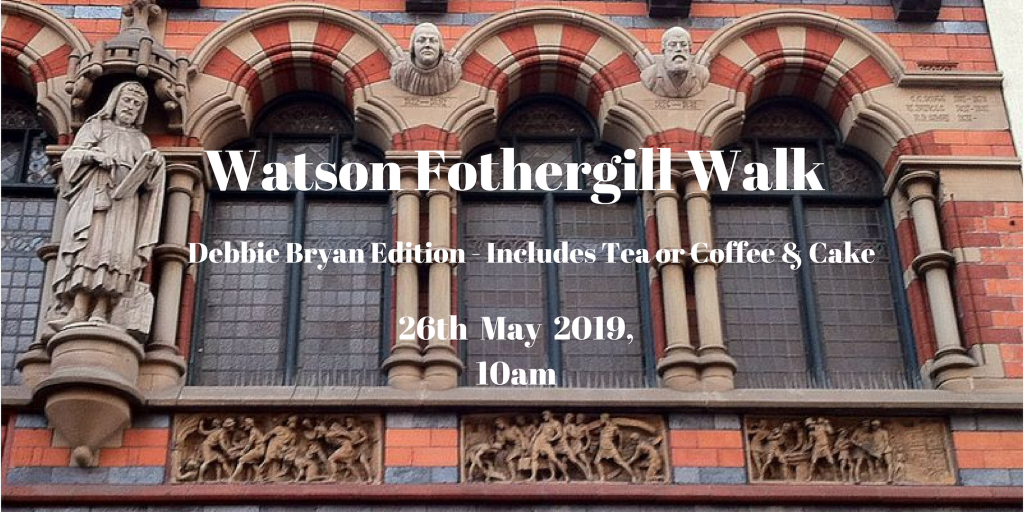
I hope to add more dates and try out some other walks in the coming year, please sign up to the mailing list for the latest news.
After a good look around in Sherwood, I went for a further wander and caught a bus to Carlton to see if I could find the Brewery at Mar Hill (A71). Away from the bus route, deep into Carlton, I found the building. It was originally built for Mr Vickers, in 1899. It was convereted to residential use around 2005.
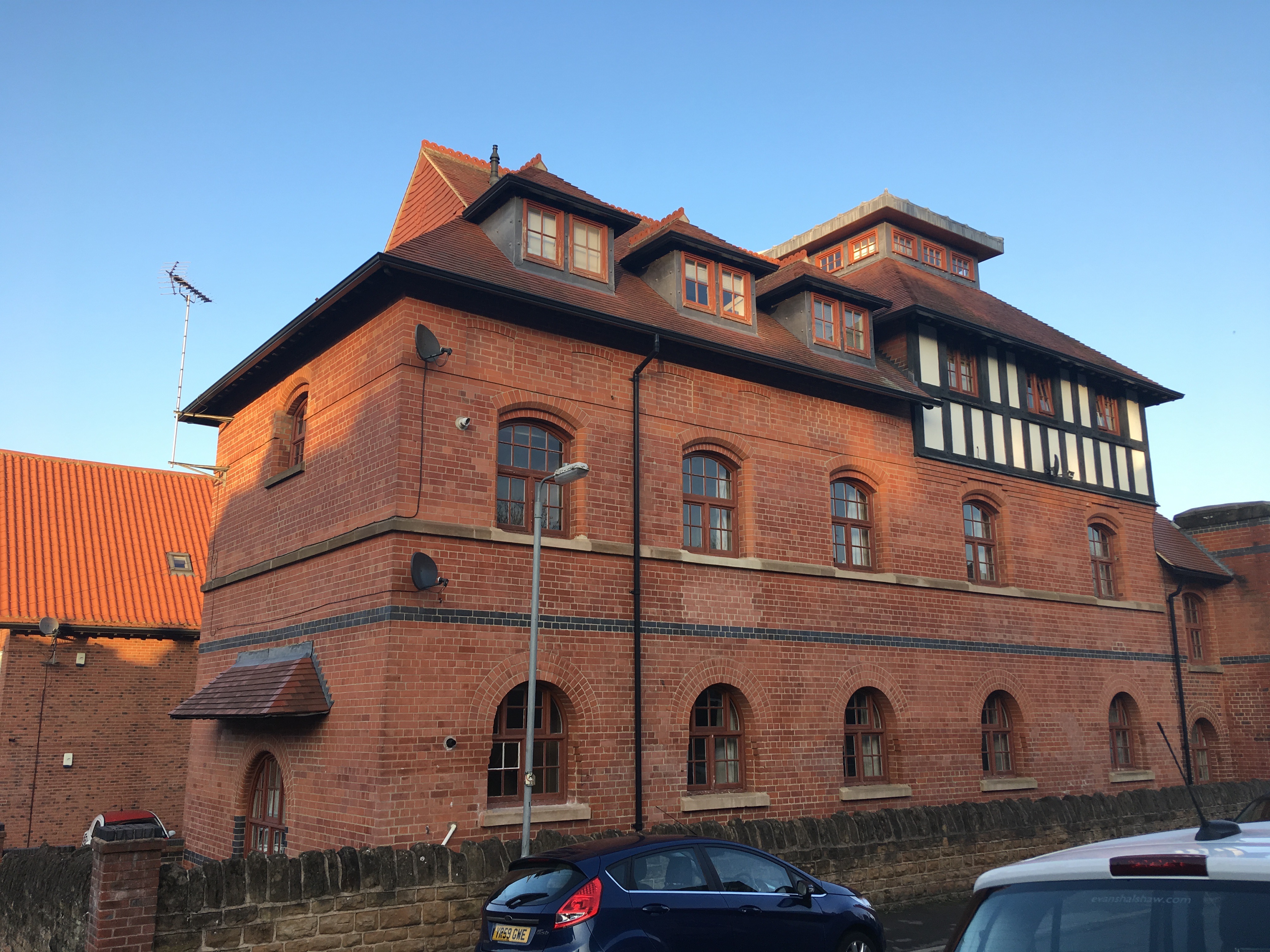
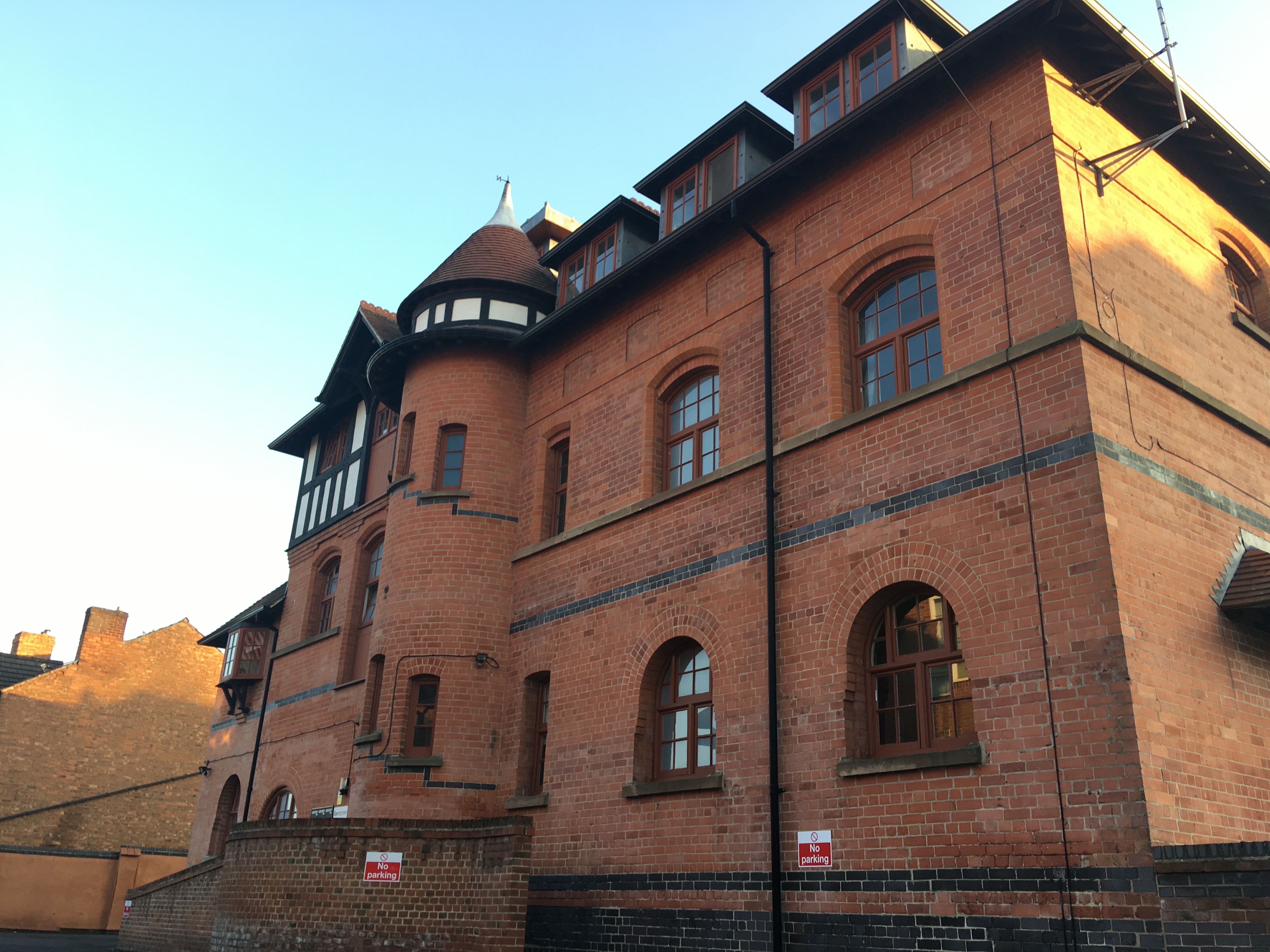
From what I can find online, the Carlton Brewery was a relatively short lived enterprised. The Vickers family held the licence at The Black’s Head pub close by in Carlton in the late 1800s.
“Brewing in Nottinghamshire” has an older picture of the building and states that the Carlton Brewery was short lived. With Mrs Vickers there in 1902 and Willam (her son?) there between 1904-1906. It was sold in 1904, 1906 and 1909. It became a laundry, then a print works and then it was used as a dye works owned by the Ilkeston Hosiery Finishing Company. The sequence of these changes is not entirely clear.
Along Primrose Street are also a series of 16 terraced houses built for brewery workers. It has been suggested that Fothergill also designed these but Darren Turner refutes this: The drawings survive in Nottinghamshire Archives but there is no stylistic evidence in the design, not documentary evidence on the surviving drawings to substansiate this rumour.
For more about buildings around Carlton, there is a U3A trail to follow, with some pictures of the other buildings.
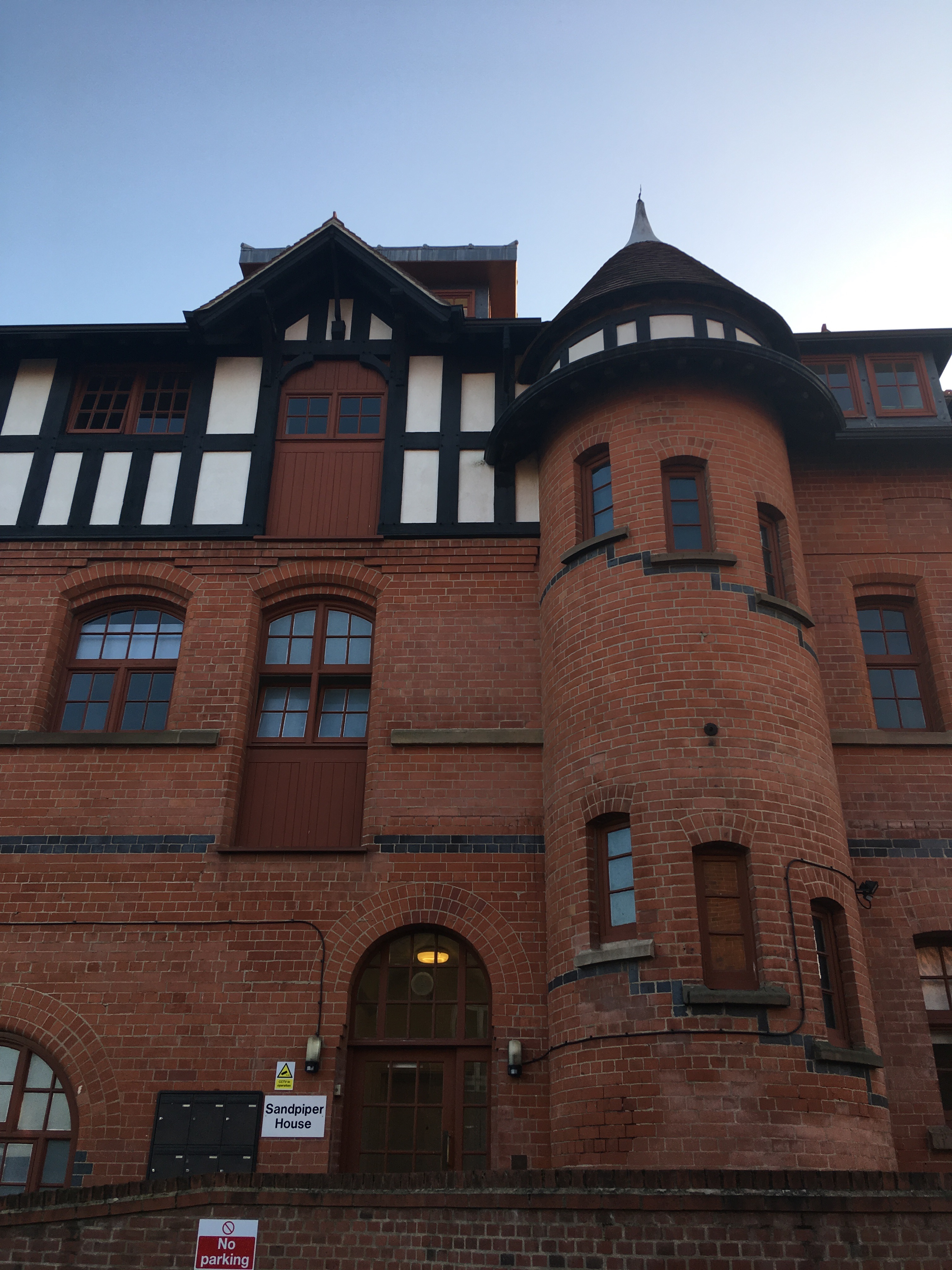
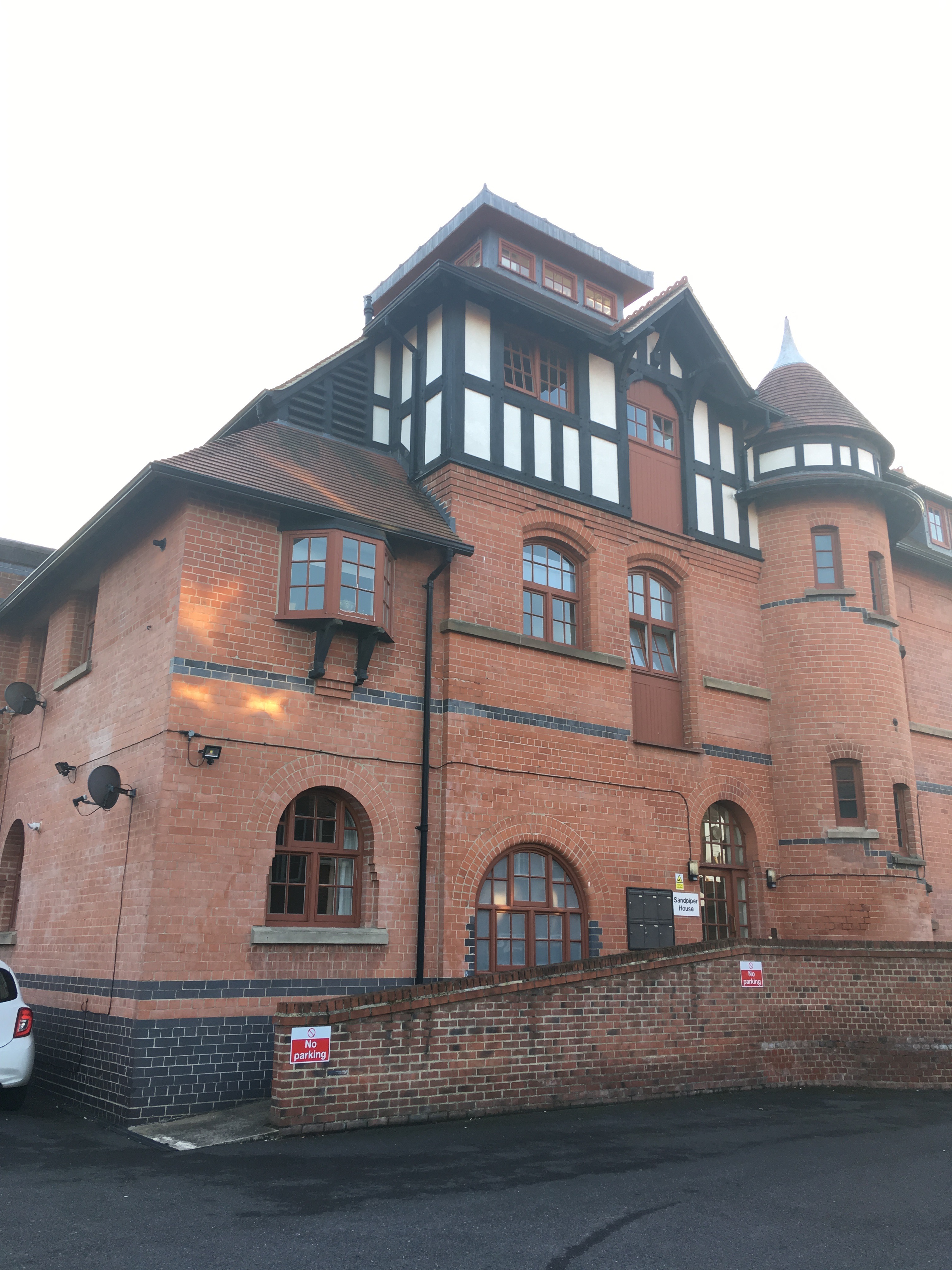
The other industrial building of Fothergill’s that survives in Nottingham is down on Castle Boulevard. I was down that way a few weeks ago, but because of the road it’s quite tricky to photograph. The Paper Warehouse (A59), on what was then Lenton Boulevard was built for Simons and Pickard, in 1893-94, the date stone reads 1894.
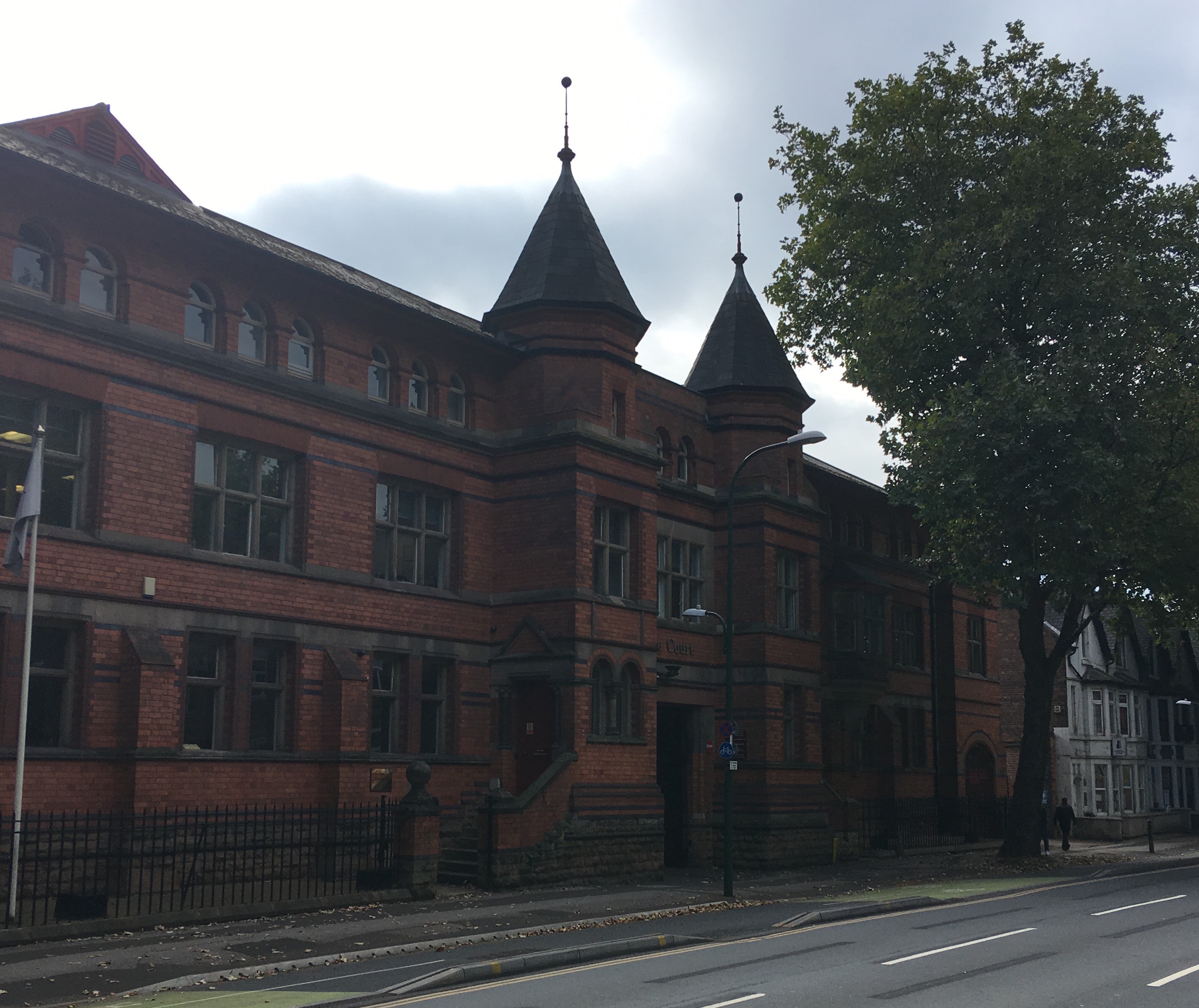

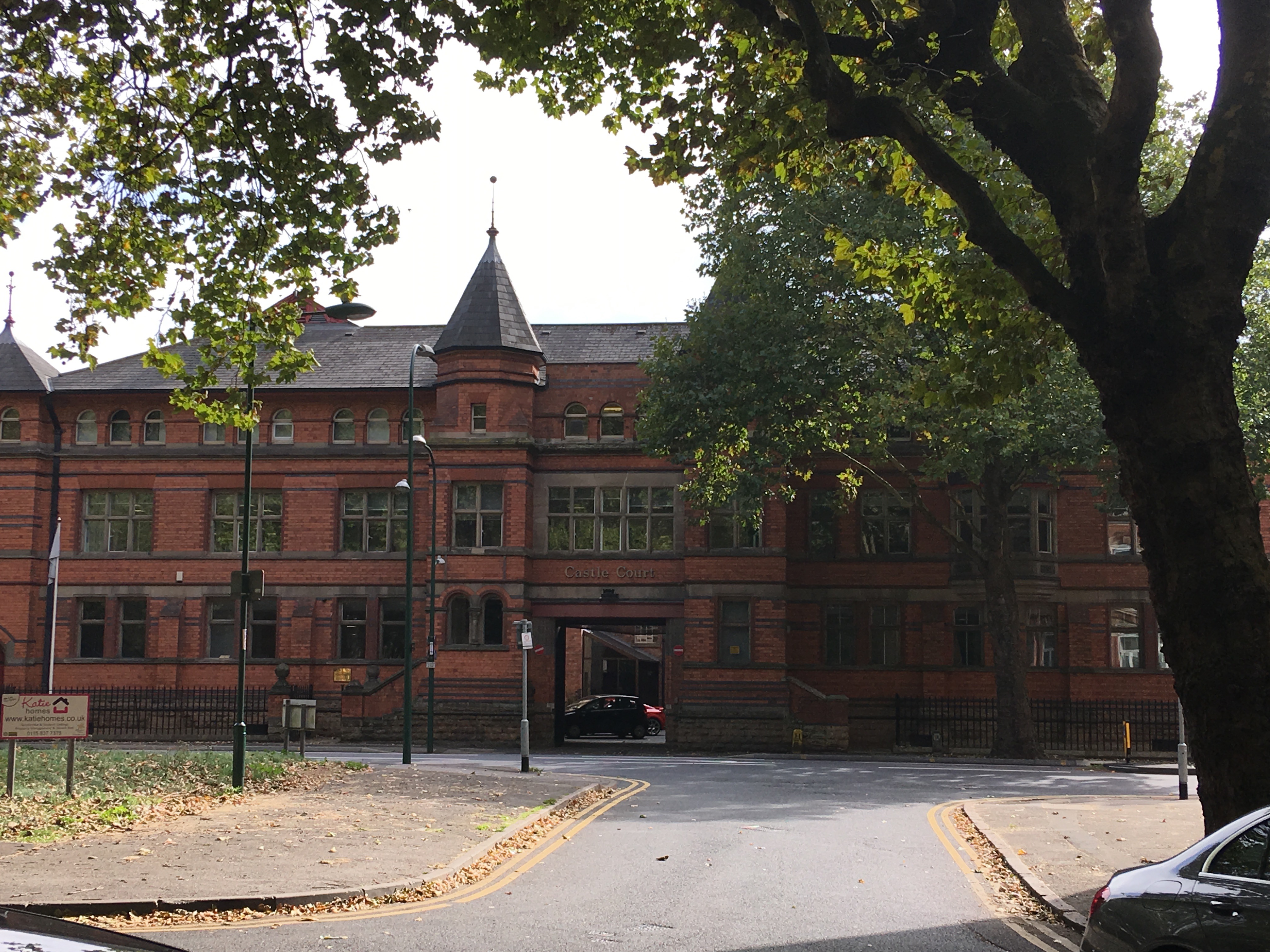
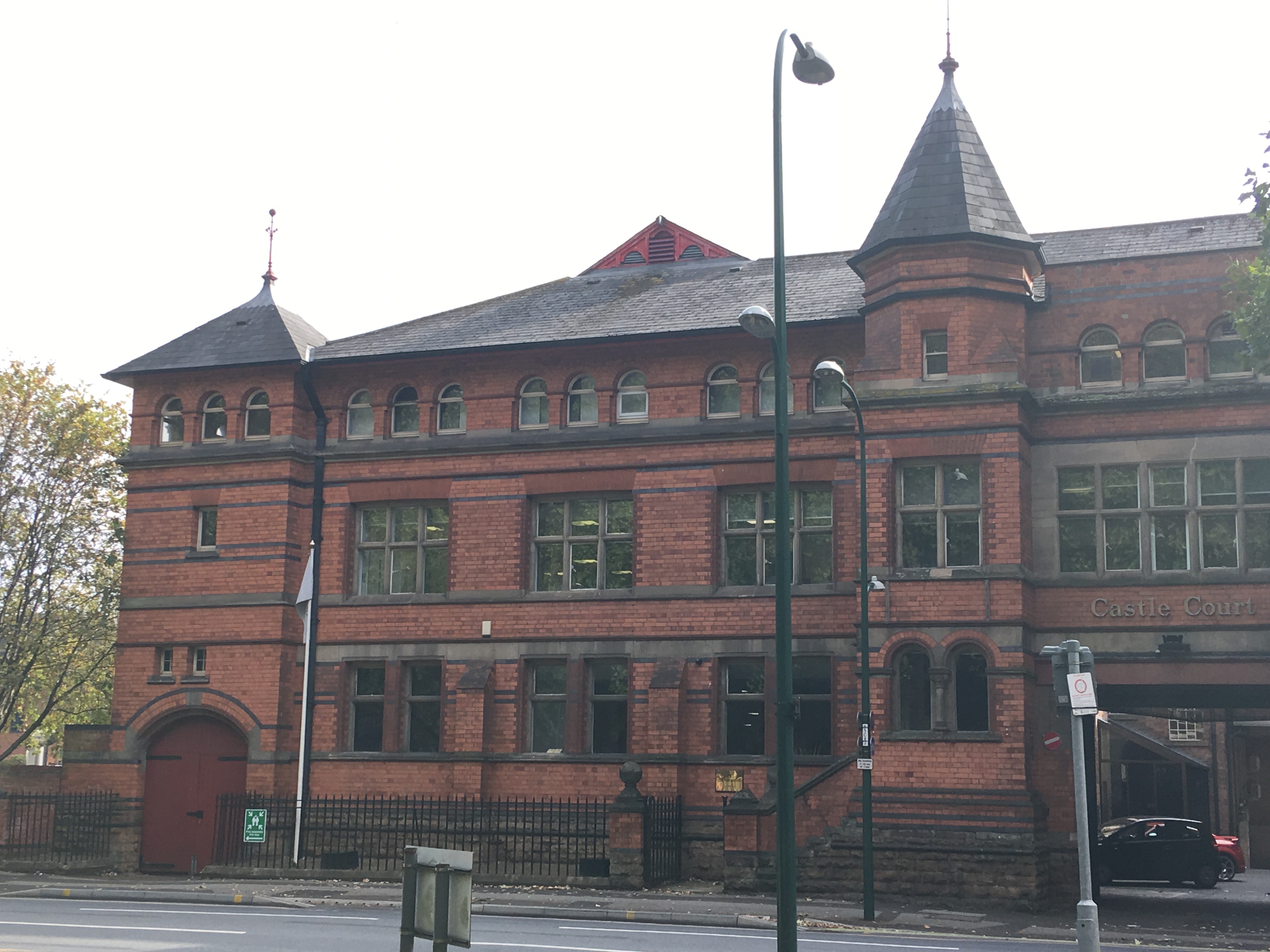
The rear of the building is on the canal side and has a more conventional warehouse look. This was one of the buildings for which Fothergill commissioned photographs from Bedford Lemere, and some of these can be found on Historic England’s website. There is another photo, taken from above, attached to the listing.
My next walk will be a little look around the Lace Market on 7 December 2018. Tickets are available here on Eventbrite.
If you’d like to keep in touch and hear about future walks, starting again in 2019, please sign up to my email mailing list.
I took the opportunity to have another look at the Ukrainian Centre (A.K.A. Clawson Lodge A43) as the Sherwood Christmas Craft Fair was taking place. Not only did I see some charming work by local artists Corinna Rothwell and Eloise Renouf (among others), I also ate a nice little sour-dough pie from Small Food Bakery.
Mainly, I took a few more photos of Fothergill’s work on the house he built for Mr Doubleday (as mentioned in my earlier blog about Carrington.)
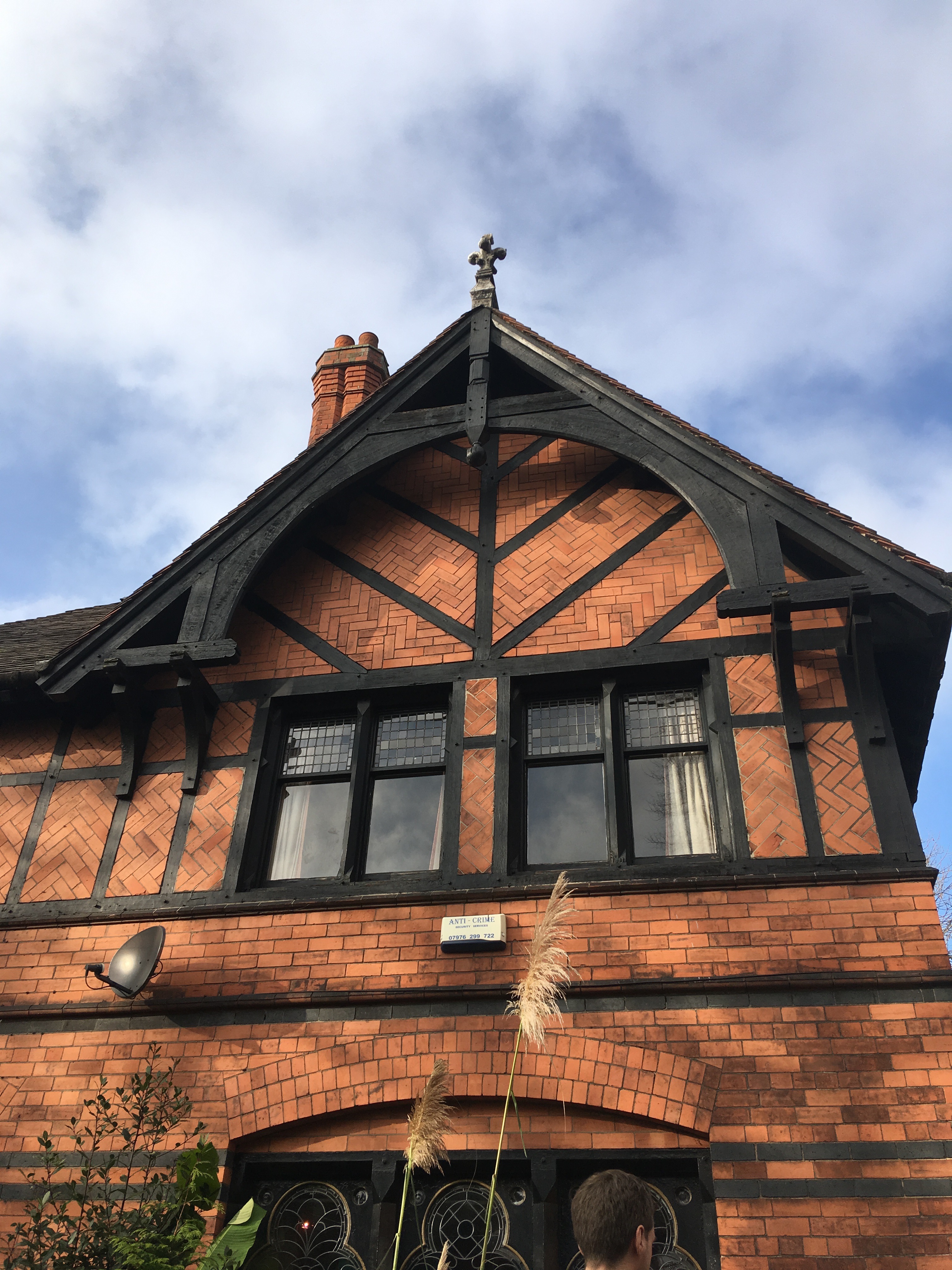
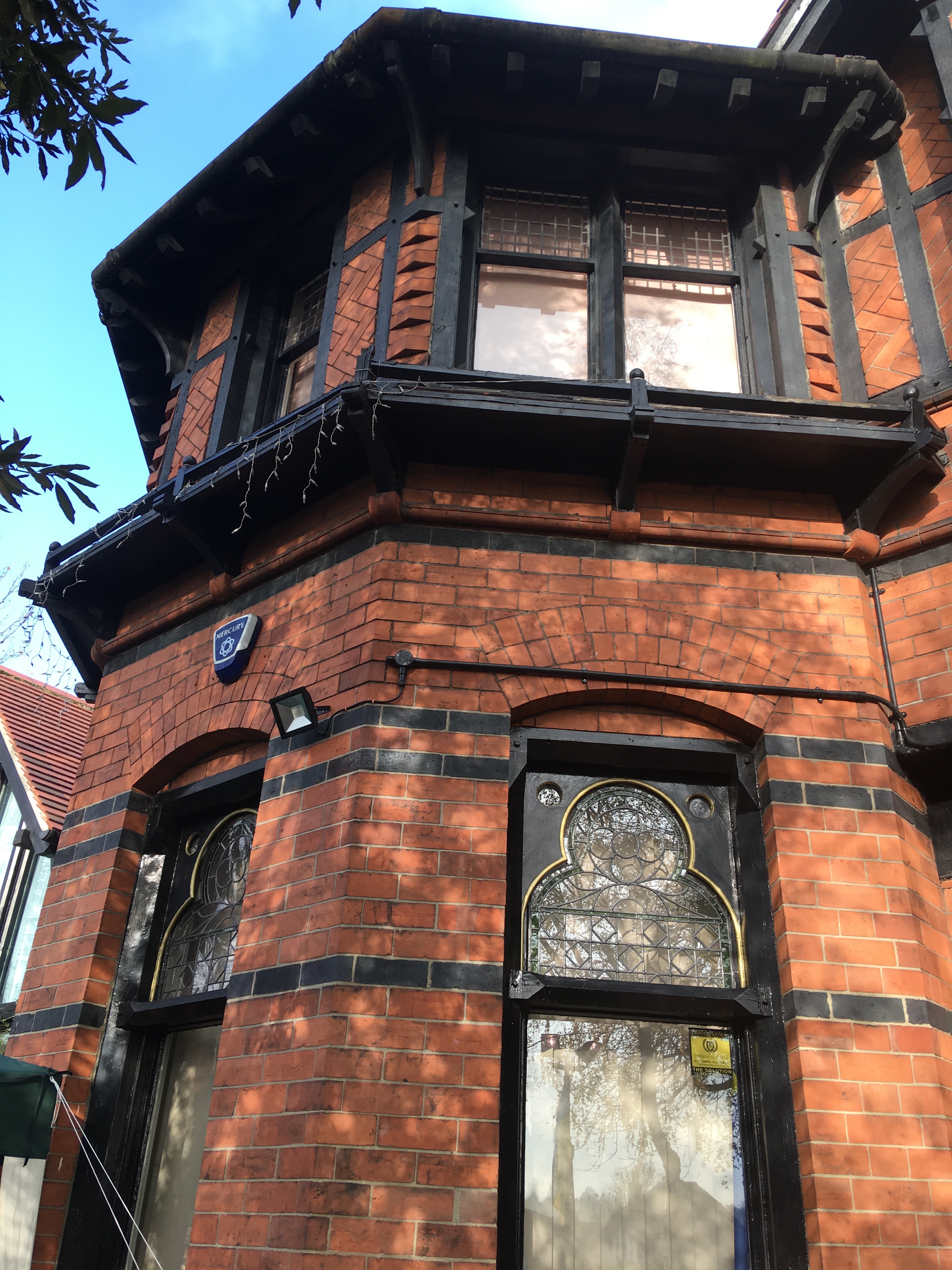
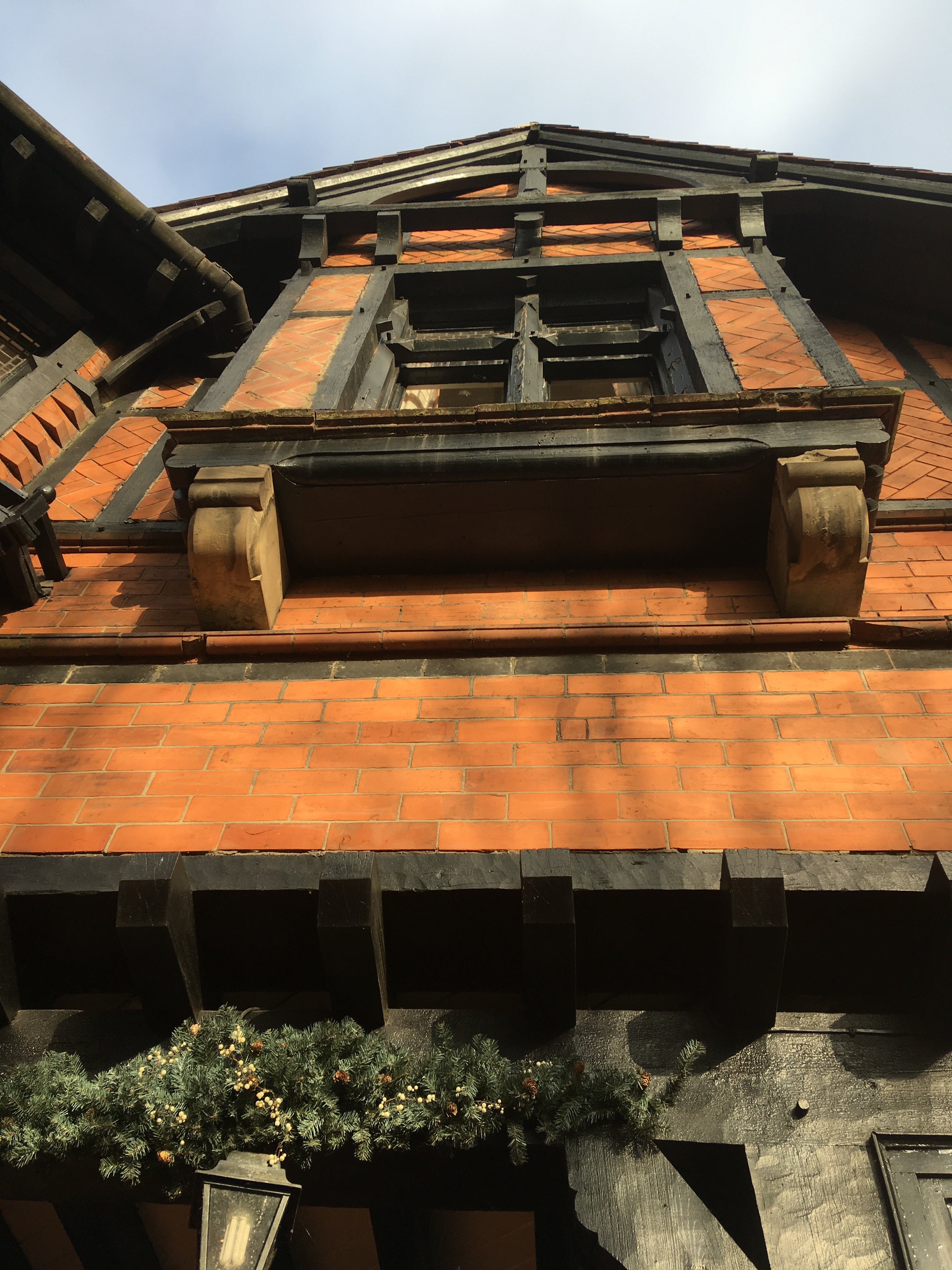
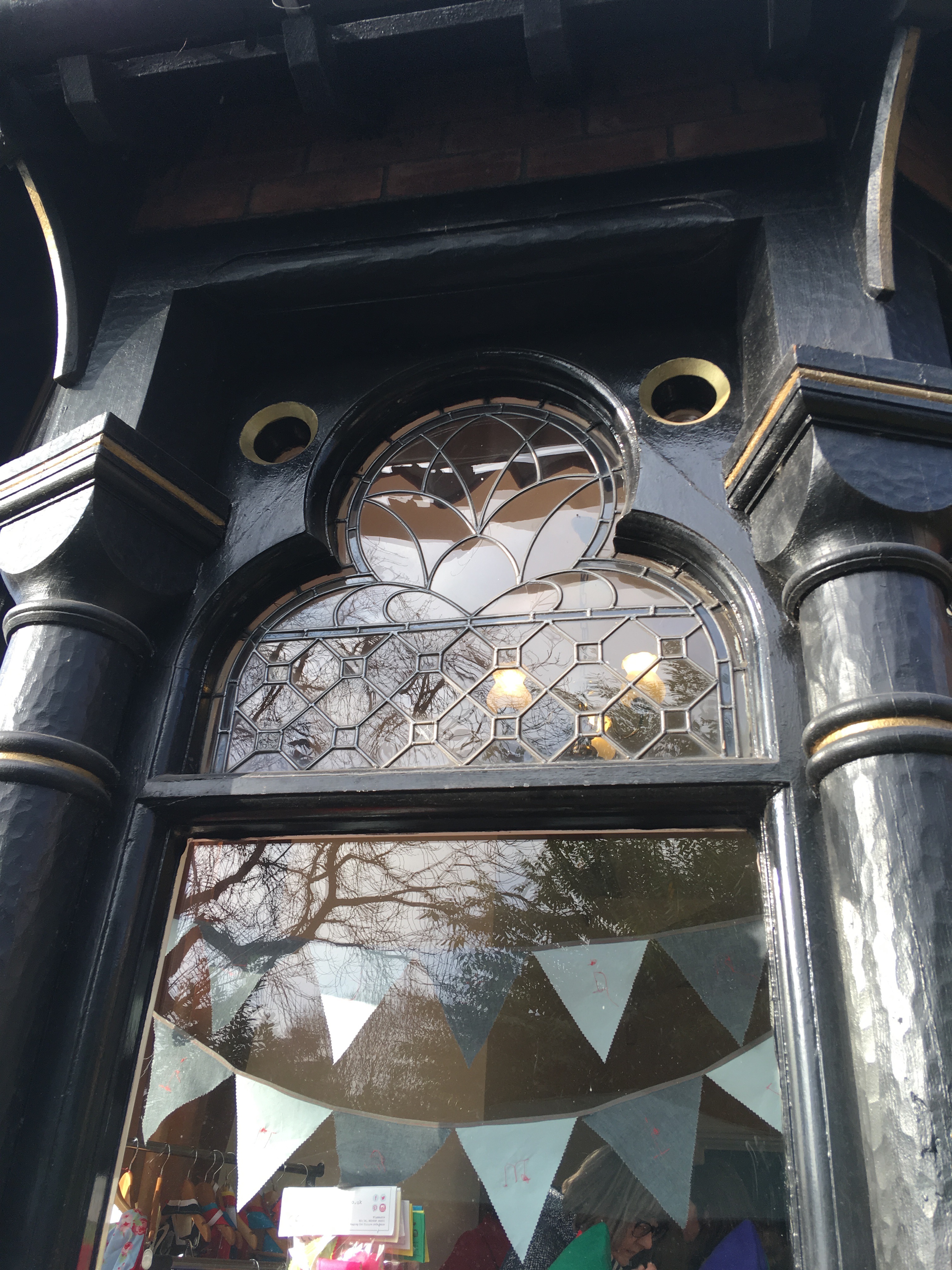
Inside was rather busy and has been significantly altered, the two downstairs rooms were full of crafy goings on so a bit difficult to see, but apart from the windows there doesn’t seem to be much in the way of original features. The house has been significantly extended and converted so, as with so many of these buildings, it remains the exterior that retains its original character.
Heading back towards Sherwood shops, I took the chance to photograph the terrace of four, three-storey houses on the corner of Bingham Road (A77). These are virtually the last project that Fothergill put his name to before he retired. They were built in 1906 with Fothergill as the client as he had previously bought up the land (next to some earlier houses he built on Mansfield Road. A46)

The timber clad gables are quite different to the earlier houses and look at lot more like the work that assistant architect Lawrence George Summers would continue to work on after Fothergill had left the office (see his later work in New Basford which is erroneously credited to Fothergill on Picture The Past etc.)
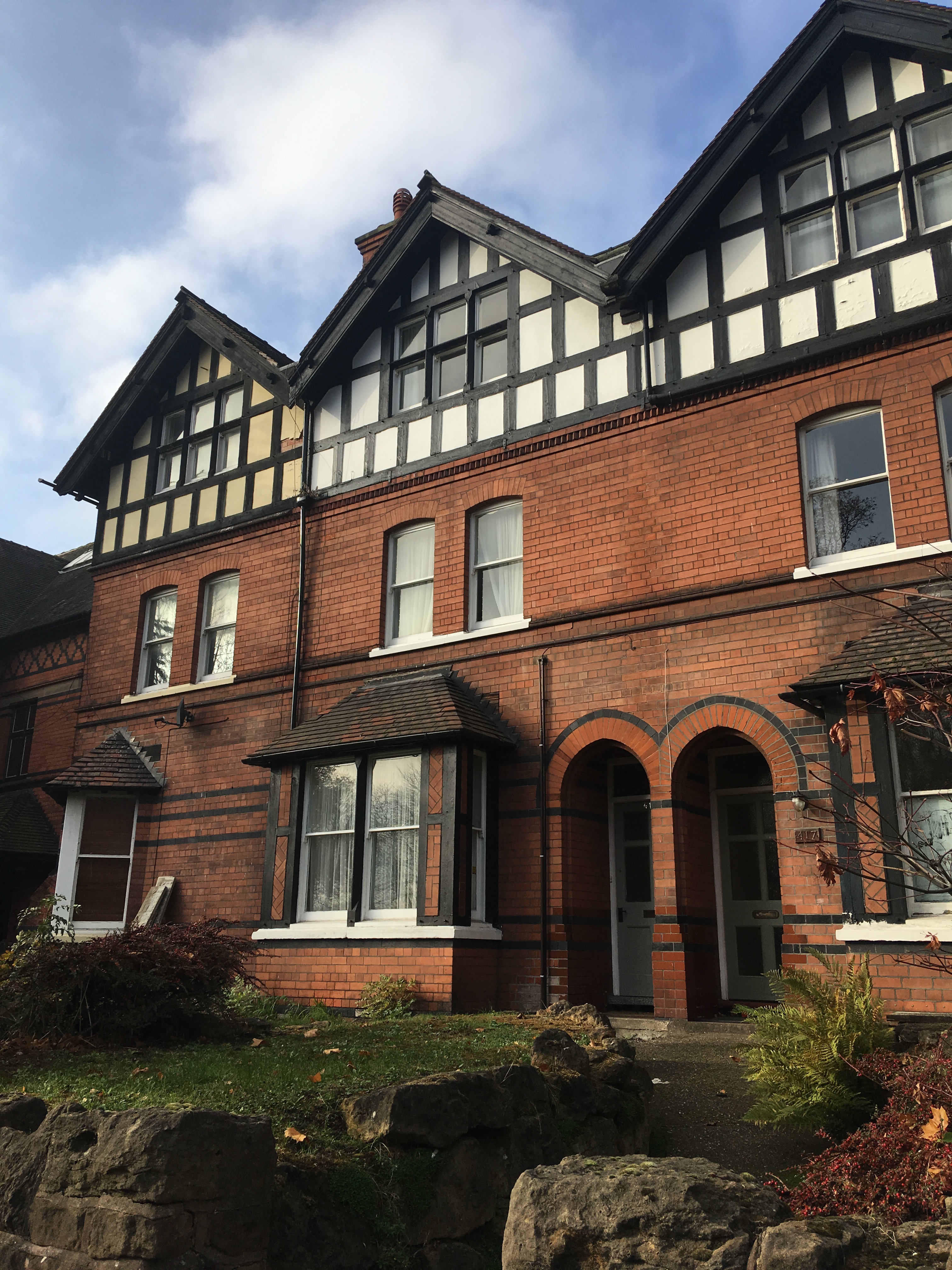

Back in Sherwood, I went down Burlington Road to look for some slightly elusive, domestic Fothergills. This part of Nottingham is refered to as Cavendish Hill in the planning applications. The earlier Elberton House (A53) was built for Mr Gallimore, a clerk to Smith and Co’s Bank in 1890. Fothergill had worked on a branch of the bank in Long Eaton in 1889. Additions were made to the villa dated 1911, and these are the last known (minor) works for a private client to be signed off under Fothergill’s own name.
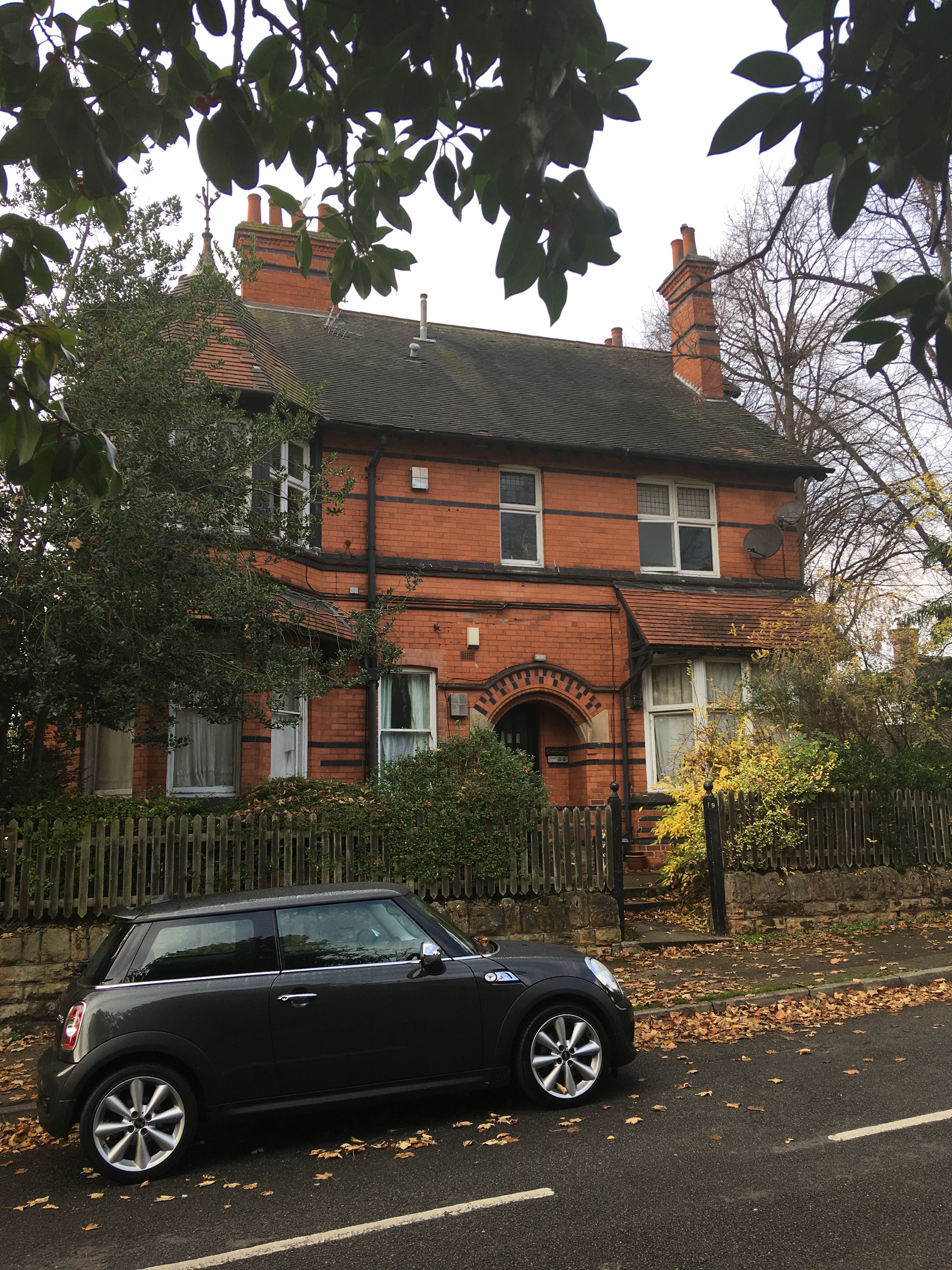
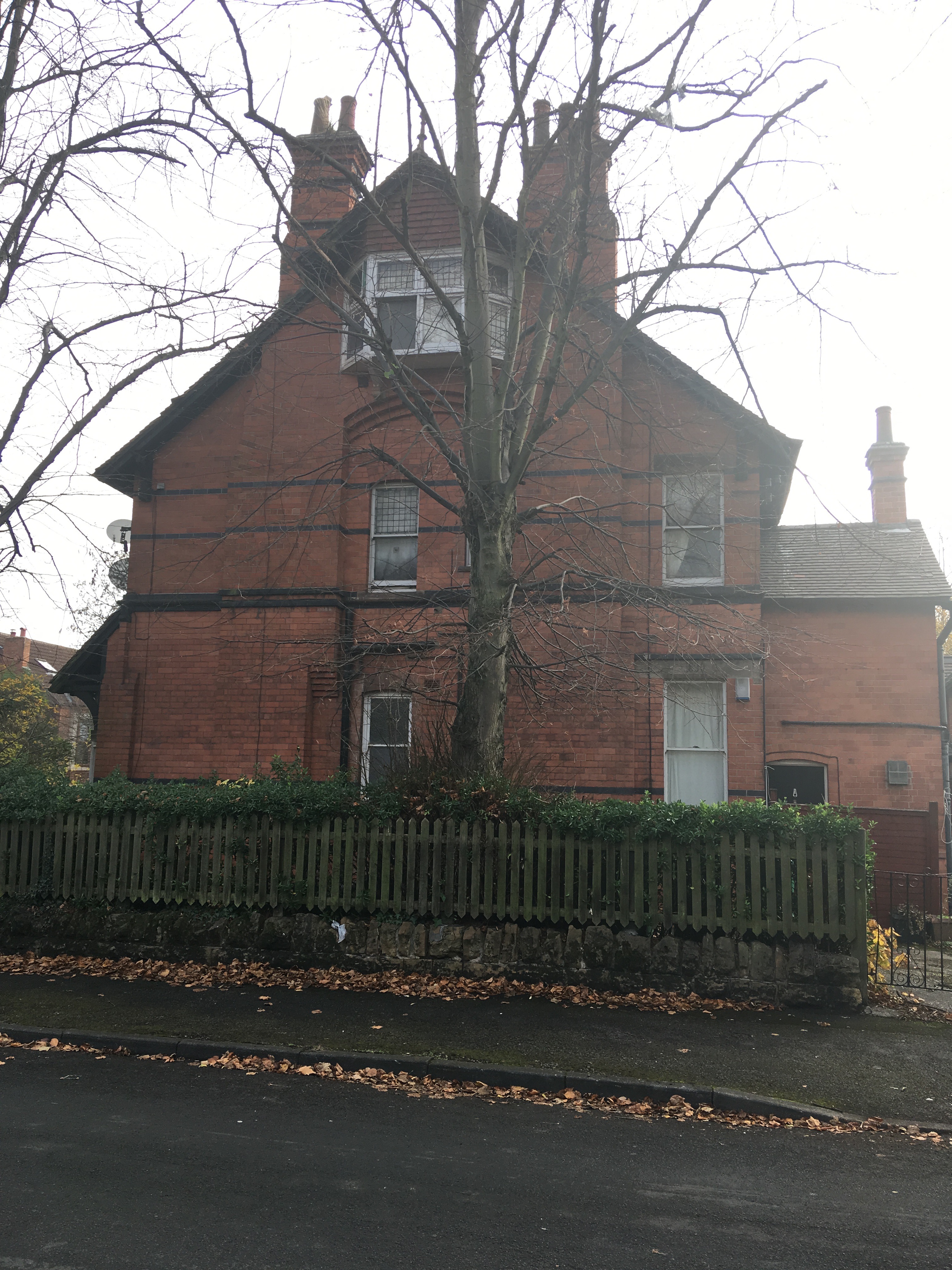
Close by is the Burlington Towers built in 1892 as a three-storey villa for Mr Lindley (A54) it has now been made into flats. UPDATE 18/11/18: I just received an email from the present owner of Burlington Towers, who has turned it back into one whole house. Apparently they were able to work from Fothergill’s drawings to get back to the original layout. There is a photo in the Bedford Lemere archive* from 1897 on Historic England’s website. (Elberton House also makes an appearance.)
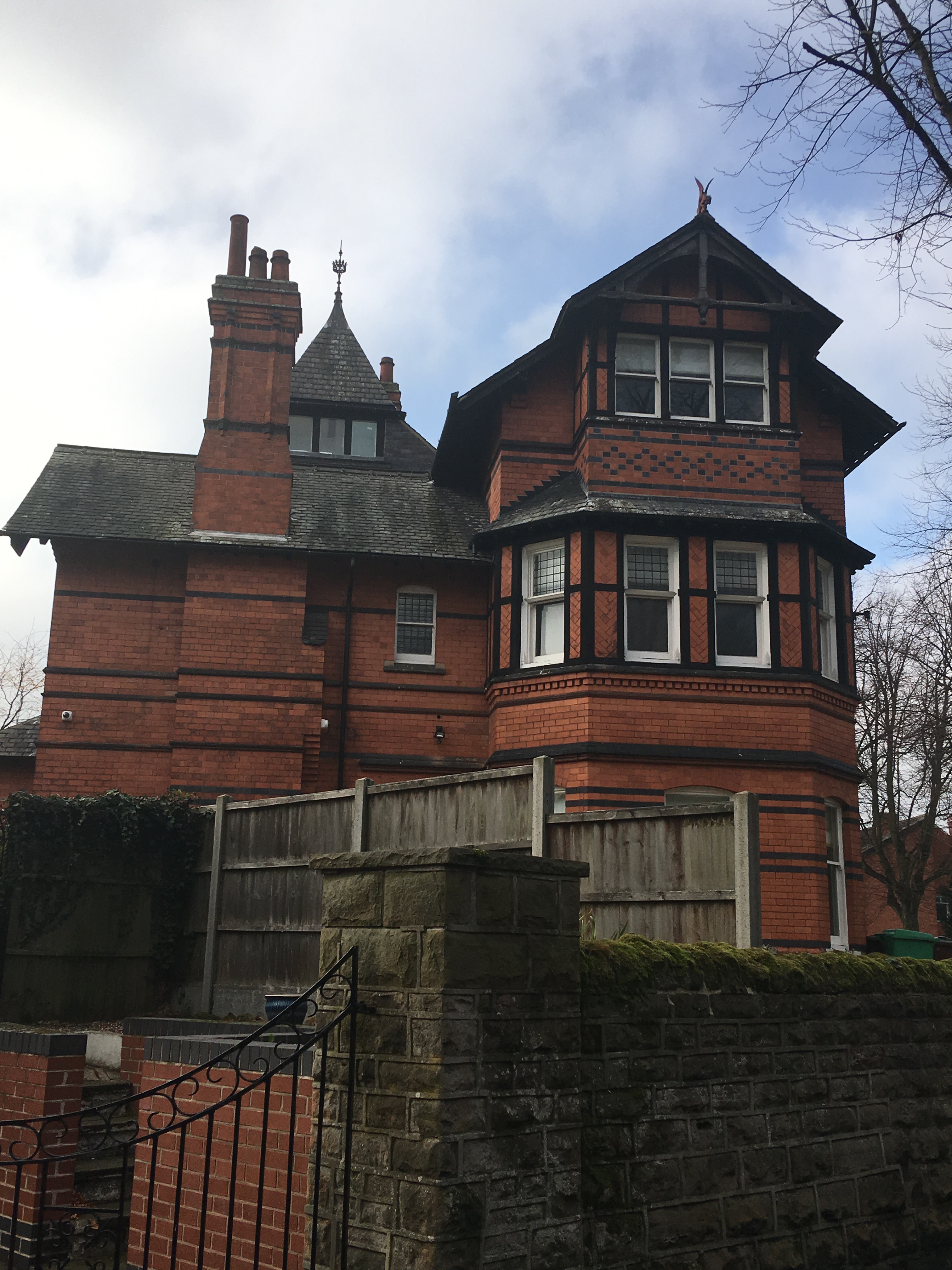
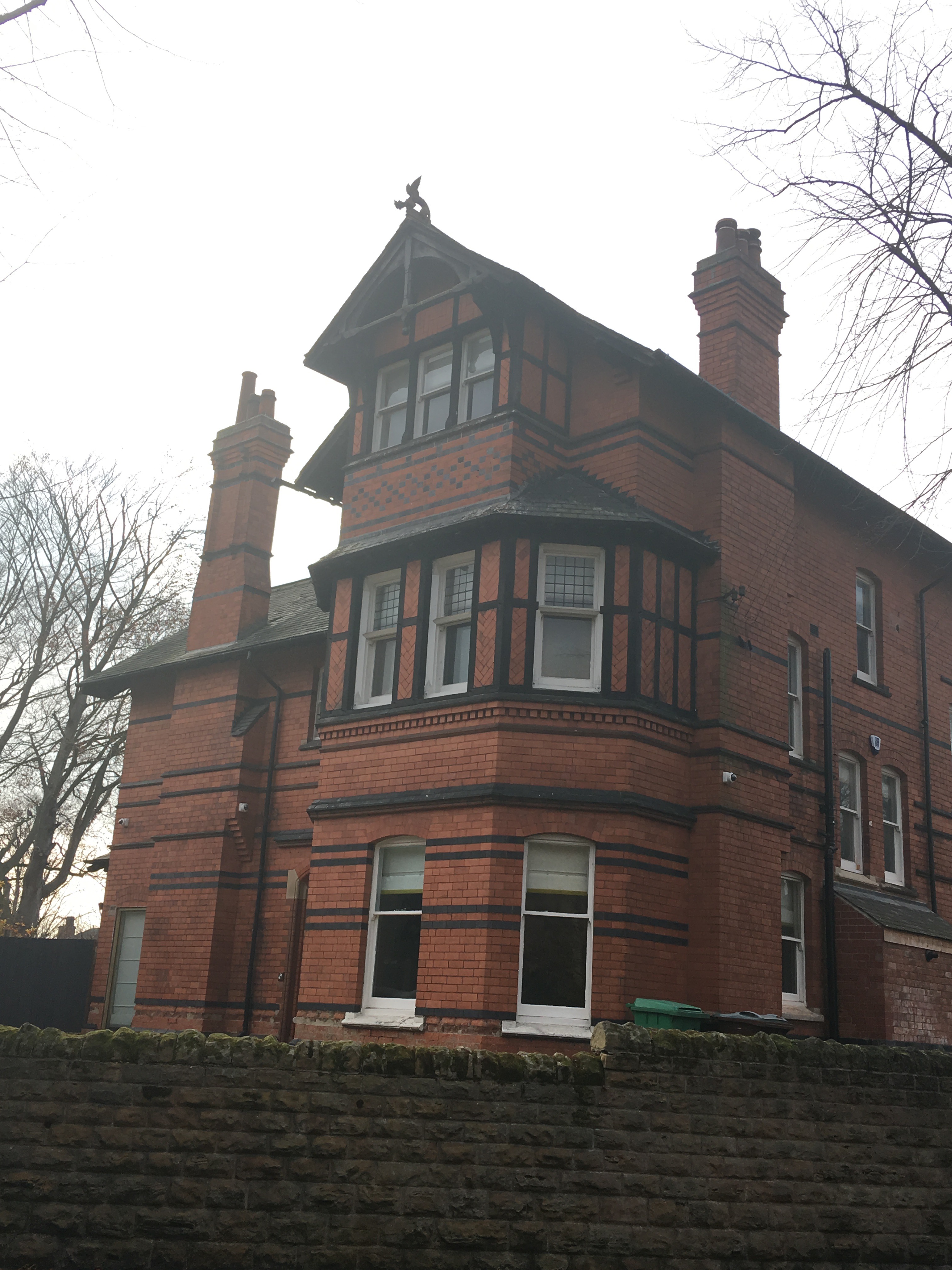
*It turns out this is the tip of the iceberg in terms of period photos of Fothergill buildings on the Historic England site, I will keep digging for more, but so far Fothergill’s own family home at Mapperely Road and the Sherwood Rise properties have been identified.
If you would like to engage my services for a walk or a talk about my Fothergill research please contact me. Meanwhile I’m leading a short walk in the Lace Market on 7 Decemeber with Debbie Bryan providing tea and mince pies post-tour. Tickets available from her website.
Fothergill Watson was born in Mansfield in 1841. Until the death of his father, he lived at a house called The Linden on Chesterfield Road. (I believe it was situated somewhere close to where the big Tesco is now). His half-brother, Robert Mackie Watson lived at the Linden until his own death in 1906.
Fothergill and his mother left Mansfield for Nottingham on the death of his father in 1852, and Fothergill trained to become an architect. He had his own office in Nottingham by the early 1860s. Fothergill’s work in Mansfield was mainly for The Mansfield Improvement Commission (a forerunner of the Borough Council) of which Robert Mackie Watson was the chairman…
The earliest of these buildings was the 1874 rebuilding of the Mansfield branch of the Nottingham and Notts Bank. Fothergill was to build their Thurland Street headquarters in Nottingham (seen on the Watson Fothergill Walk).
I took a wander round Mansfield with my trusty copy of Darren Turner’s Fothergill Catalogue to find which buildings are still standing. The bank on Church Street (A7) has long since been absorbed into the adjacent Swan Inn.
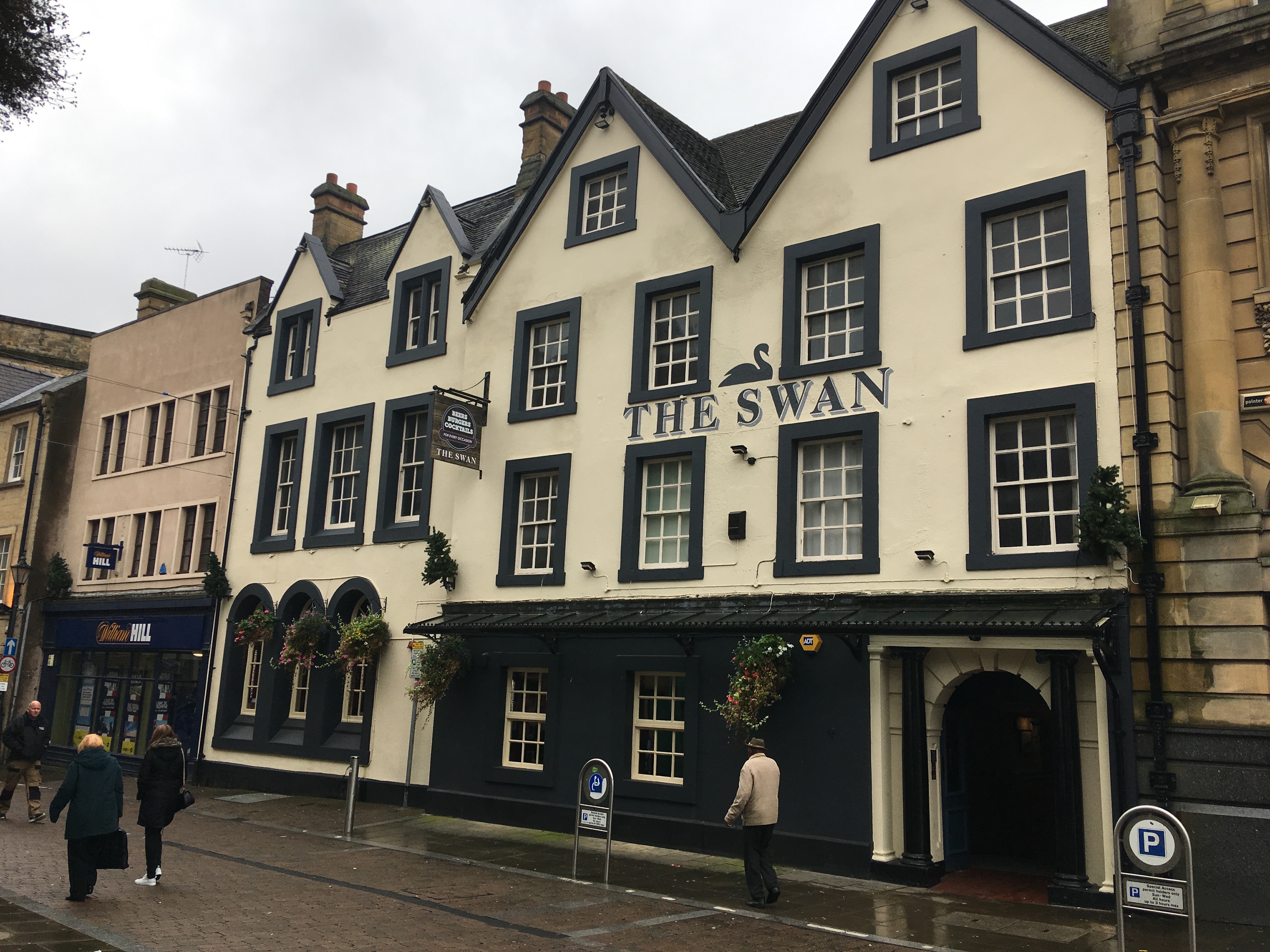
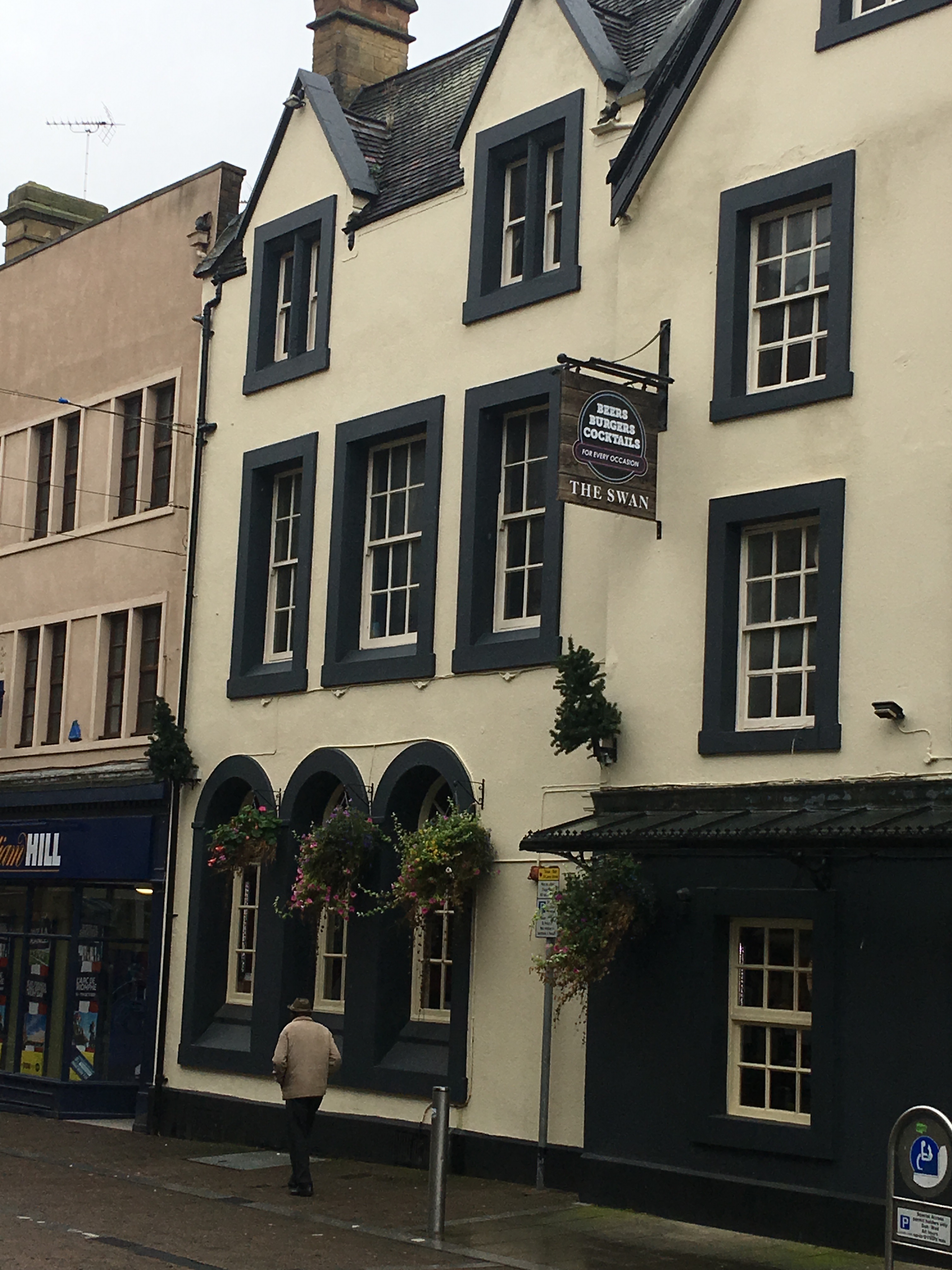
Next, I went up to the other side of the Market Place (past T.C. Hine’s Bentinck Memorial) to the other Fothergill commission of 1874, some shops and offices at the back of the Town Hall. Where Exchange Row meets Queens Walk (A8), these presently look empty. The twin gable and the pillar mullions in the windows seem to be a signature of Fothergill’s Mansfield buildings of this period.
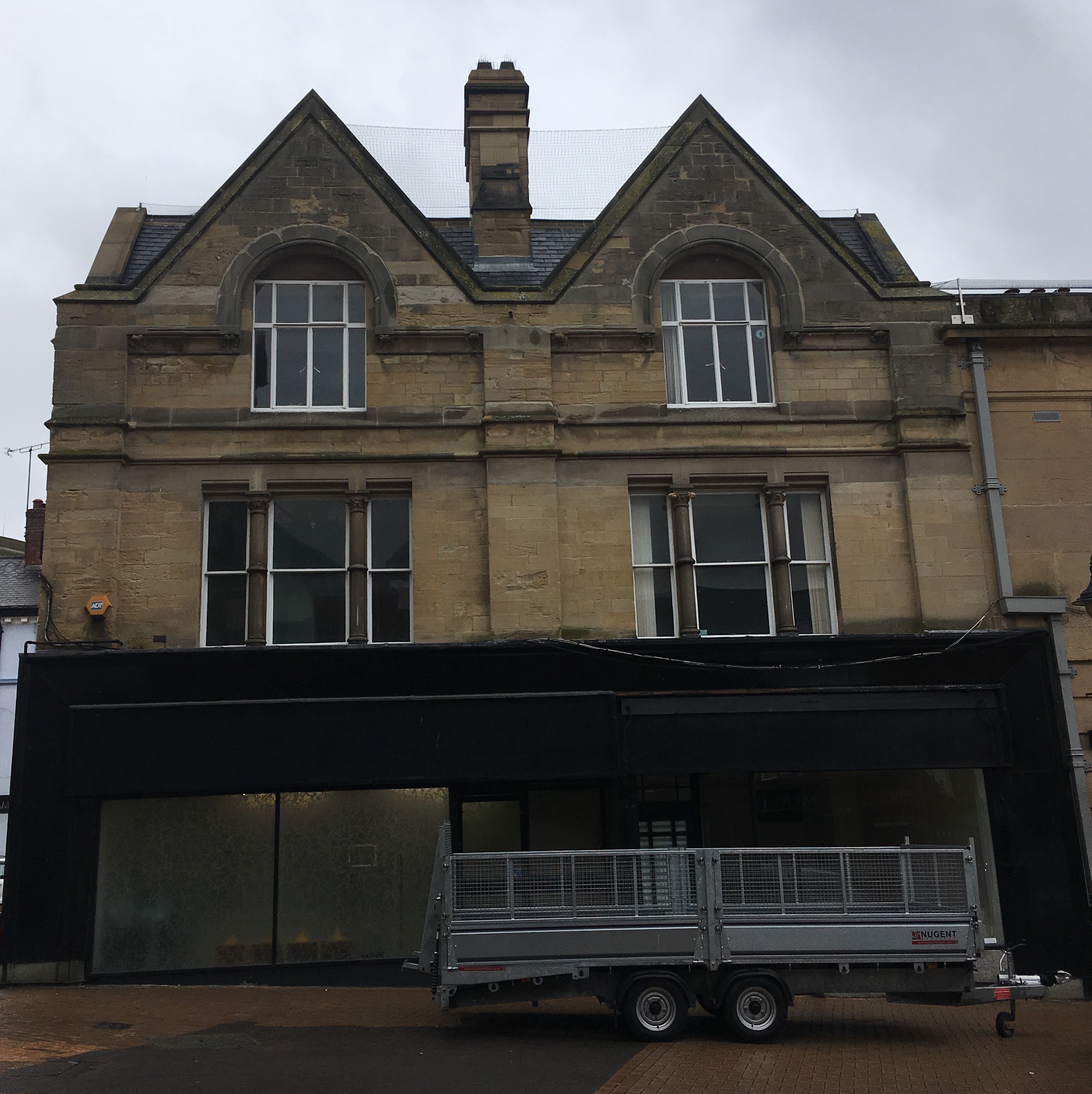

Following the map in the book, I headed for Albert Street and almost missed the next building. I must have passed this hundreds of times but only when I looked closely did I spot the telltale hints of Gothic on no. 11. It is now a solicitor’s office but was built as a house and shop in 1875 (A11).
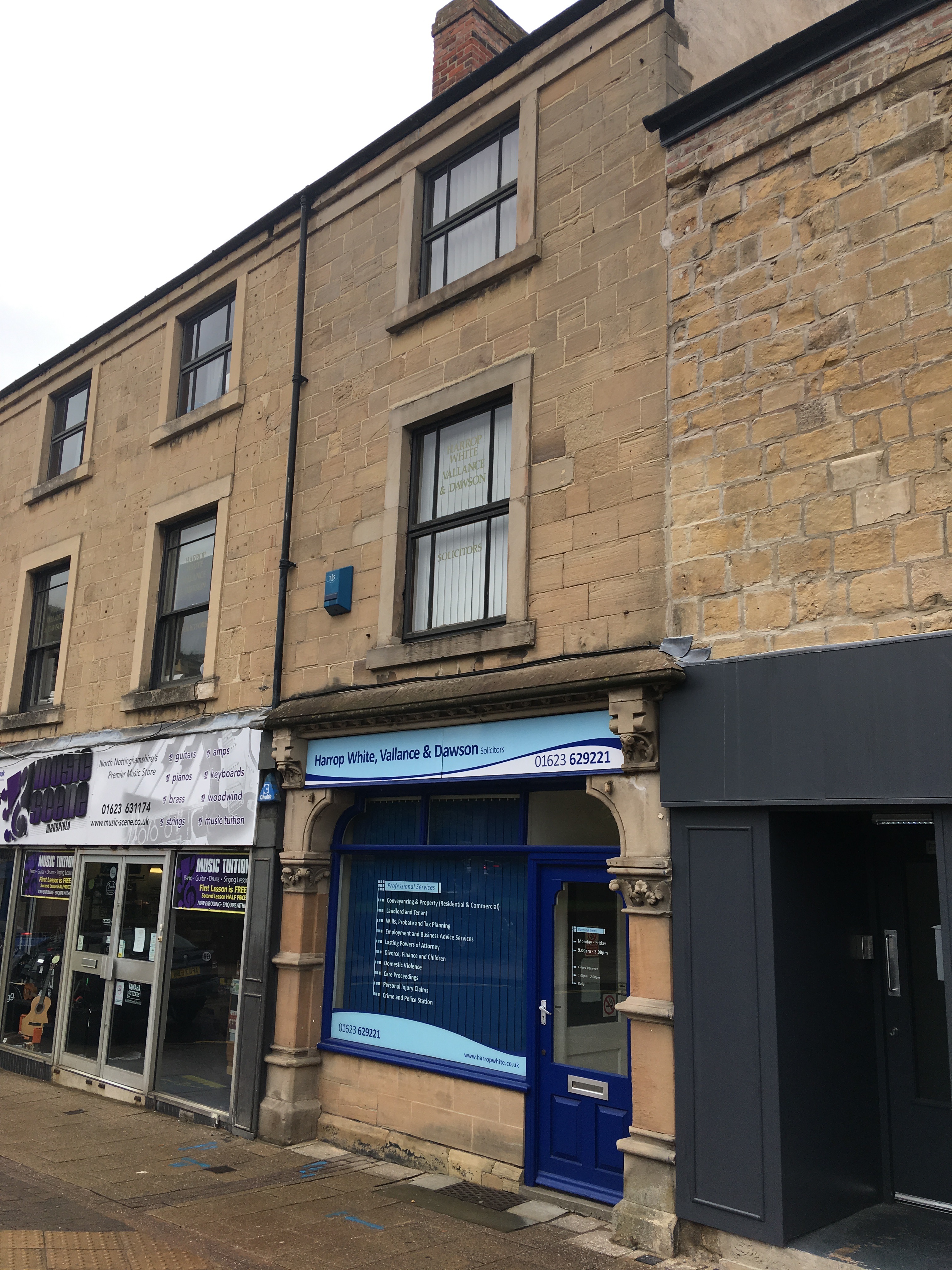
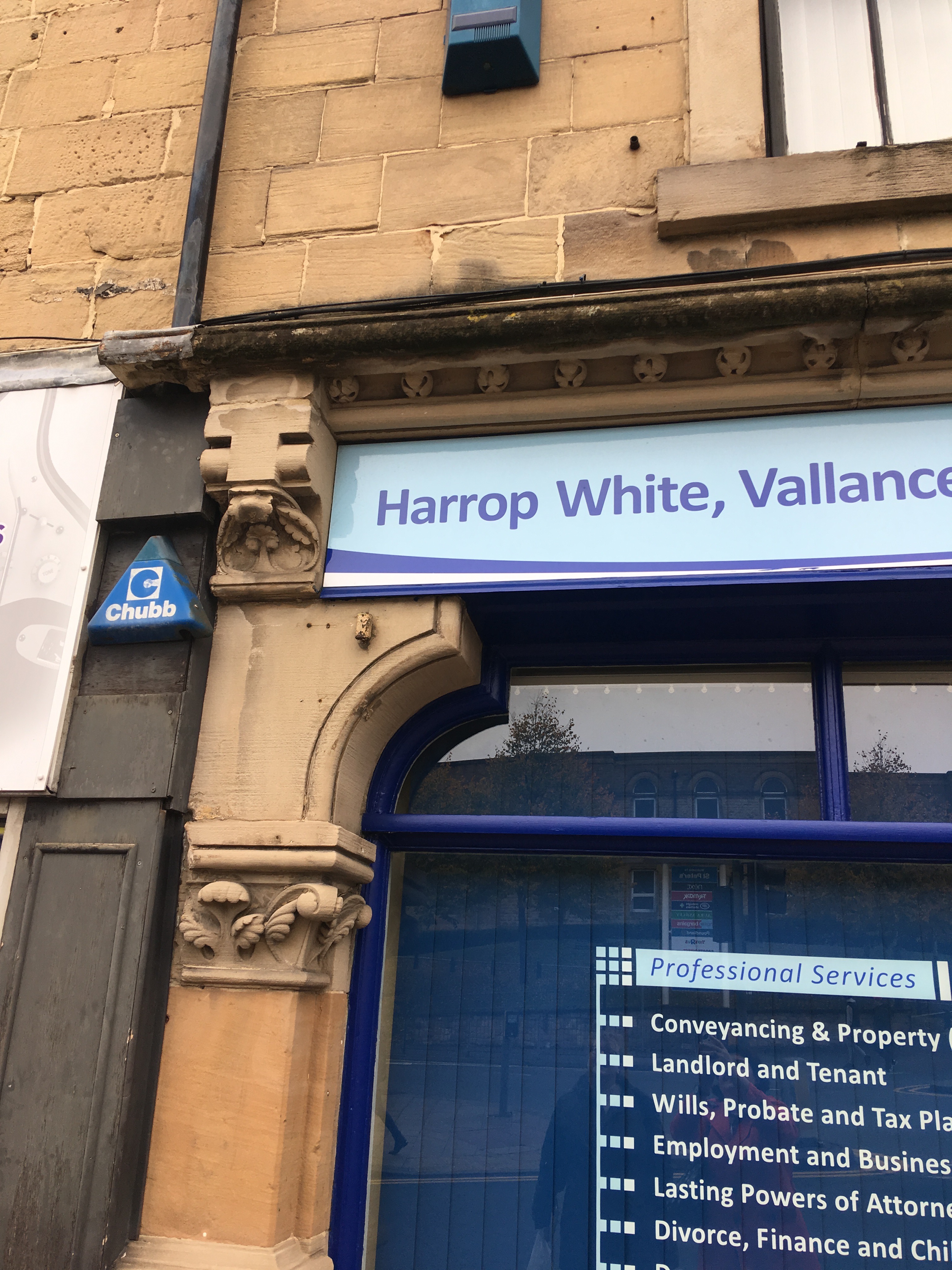
As it was lunchtime, we had a moment of inspiration! The Cattle Market built between 1876-78 (A15), the best known and most distinctive of Fothergill’s Mansfield buildings is now an Italian Restaurant – Ciao Bella – so we went to Nottingham Road for il menu del giorno.
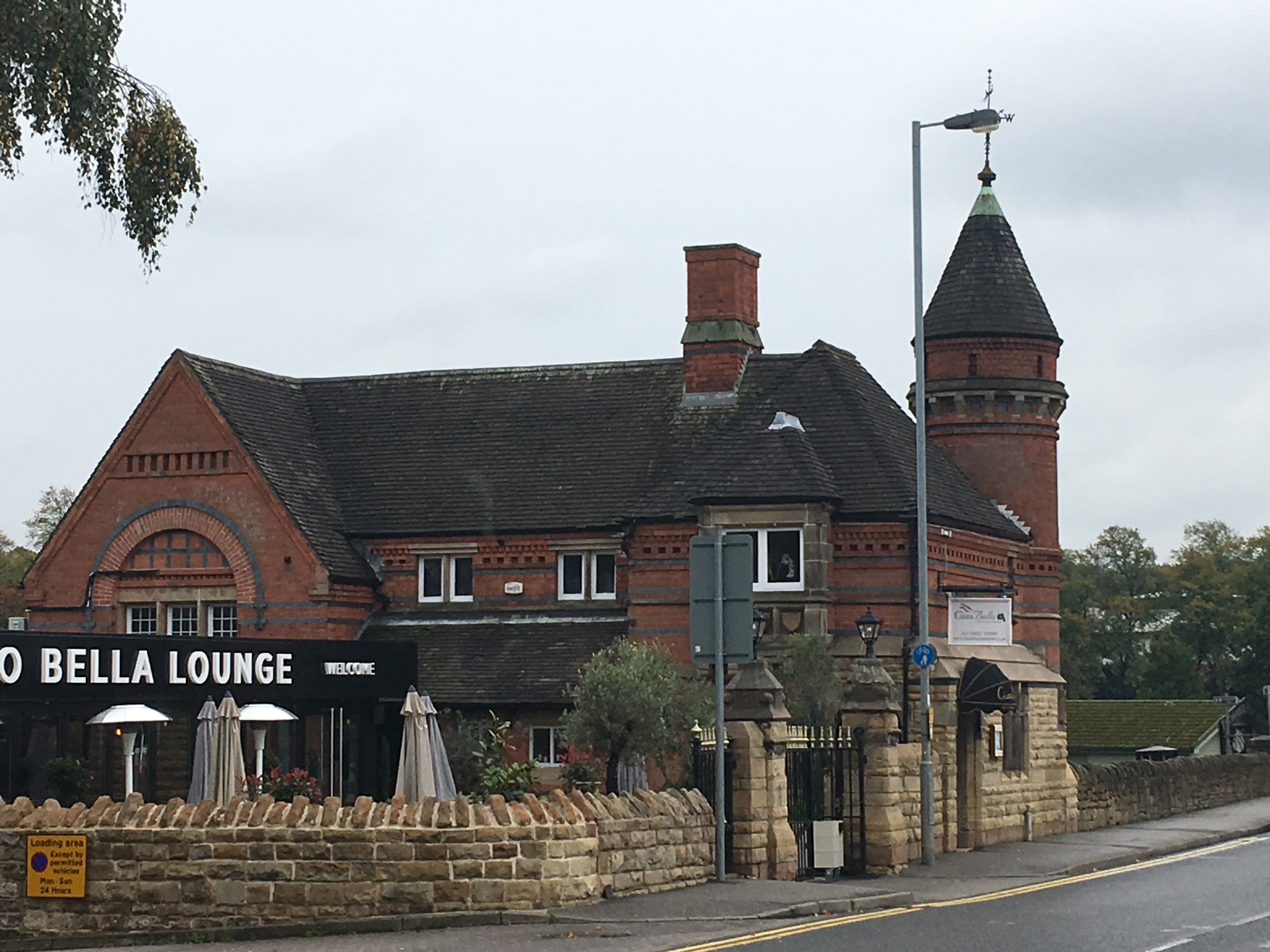
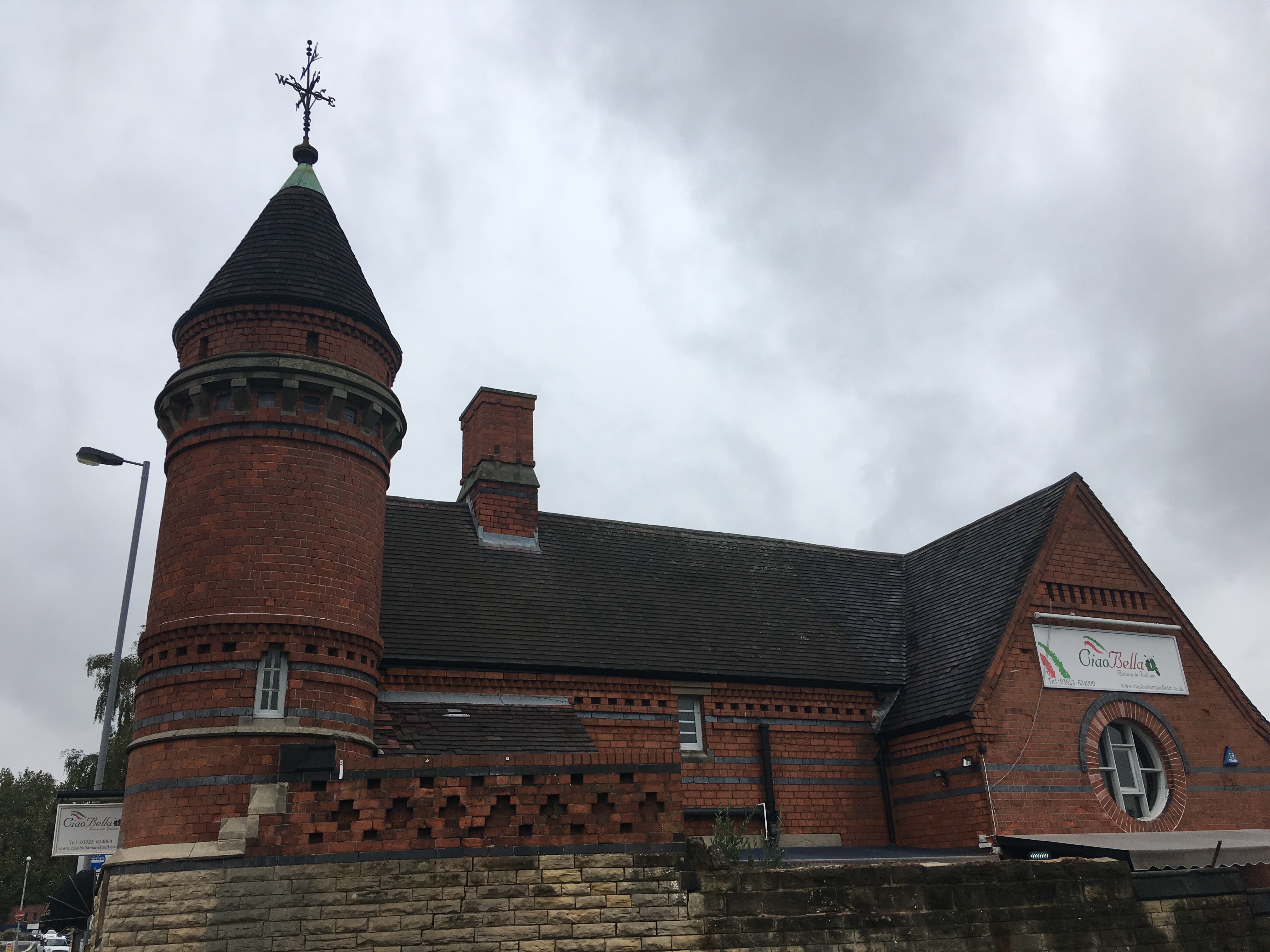
The toilets in the restaurant are upstairs, so you get to accend the spiral staircase in the turret. The Cattle Market stopped operating in 1987 (I can just about remember what the yard looked like before Water Meadows was built on the site). The building that is retained was the Market Keeper’s residence… this was the last job Fothergill did for the Improvement Commission.
There is one more building on Nottingham Road, and again we had to look closely to find it. The Villa (A18) is described as being two storey with attic rooms and at first we were distracted by the gloomy gothic vicarage across from the disused church on Nottingham Road, but a closer look at the map sent me back over the road and we realised that the Fothergill villa was this much plainer house, converted first into a Ukrainian Institute then used as a Family Centre, there was a removal van outside, so it looks like it is now being used as flats.
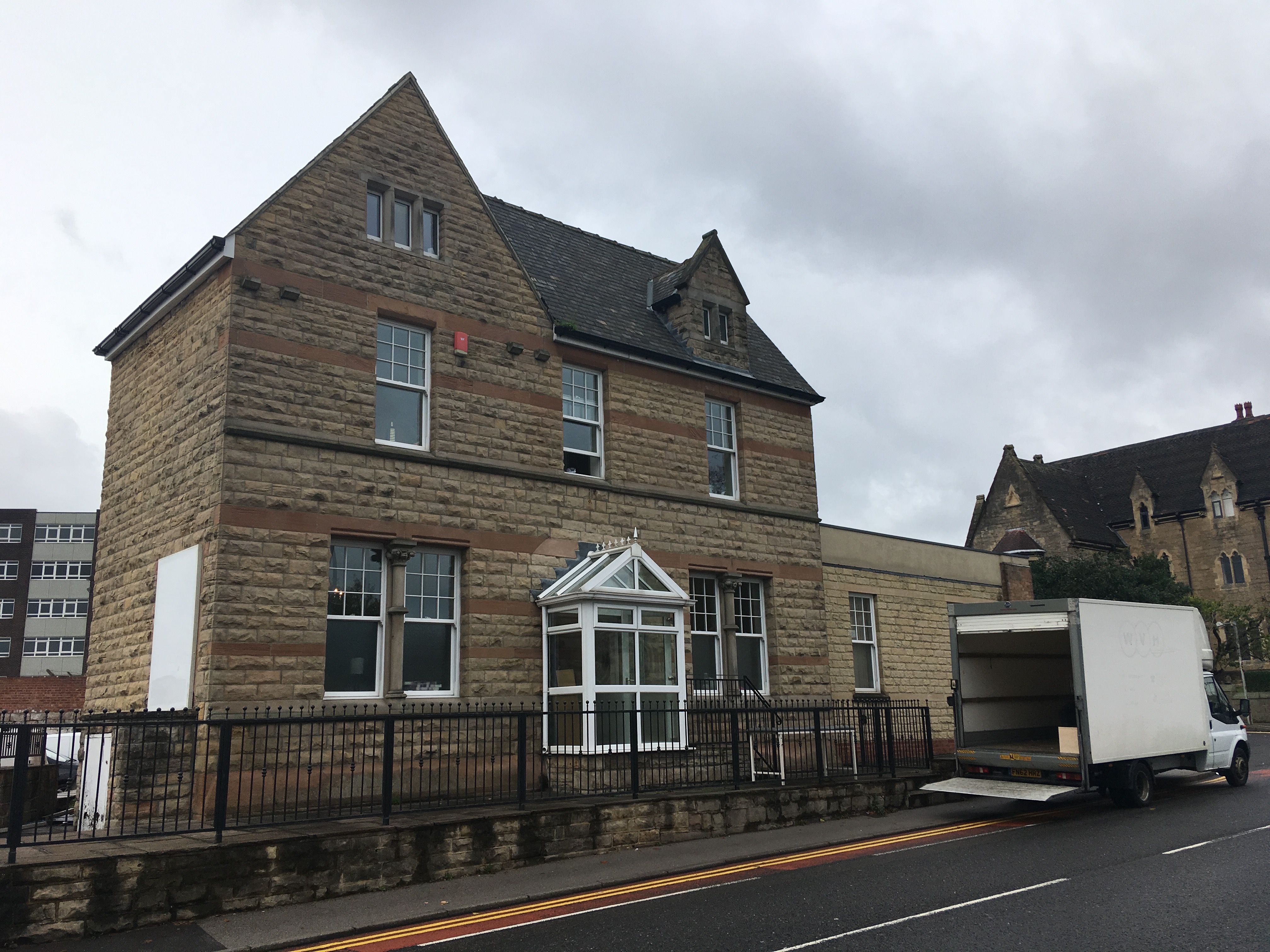
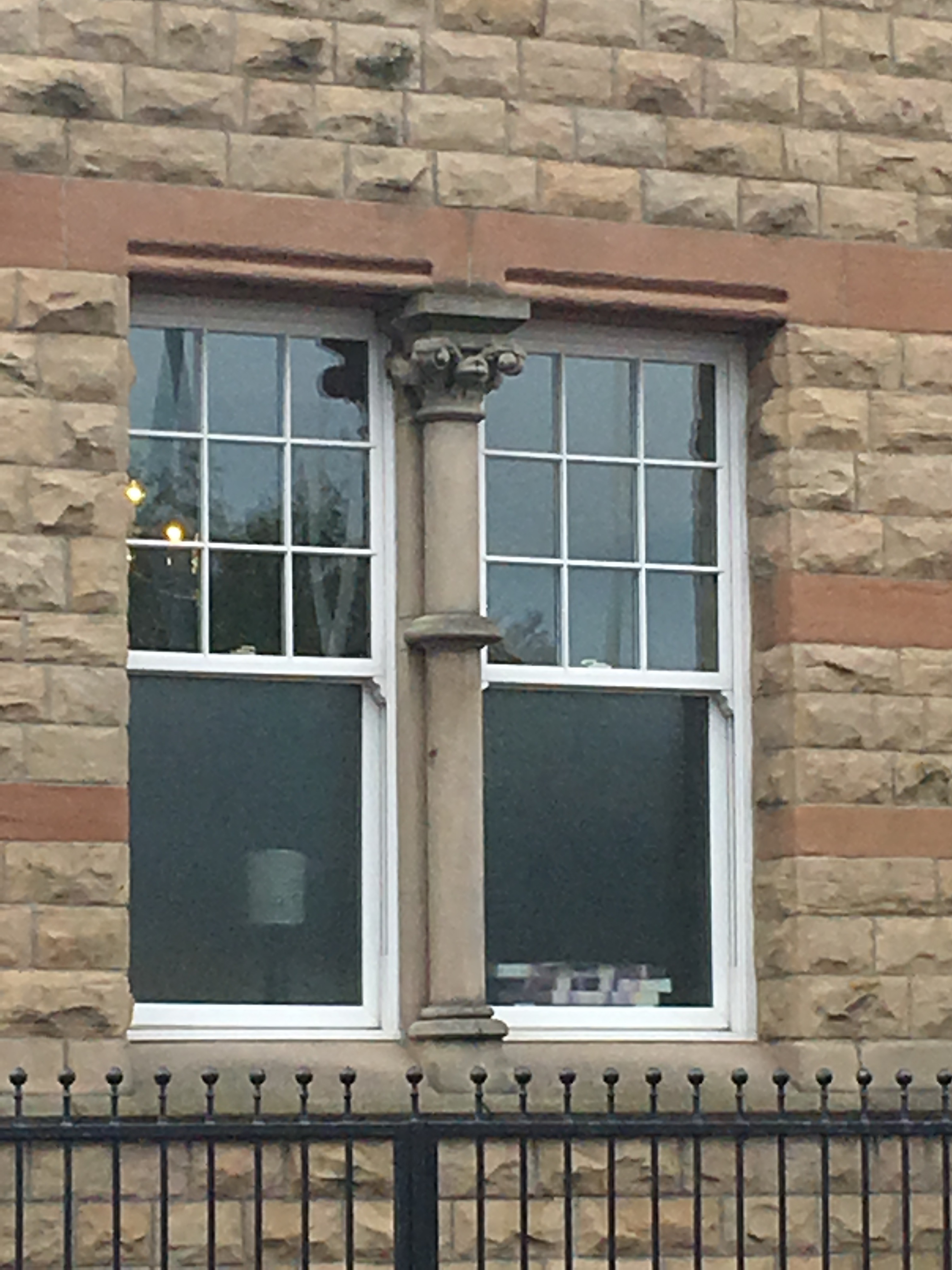
Finally, I decided to walk a little further out of town to find a pub that Fothergill had built for Mansfield Brewery (his Father in Law’s business) in 1876. The Kings Arms (A13) is a rebuilding of the pub previously on the site demolished at the widening of Newgate Lane. Darren Turner presents overwhelming evidence that this is indeed a Fothergill building and looking at the details around the entrance, I would have to agree.
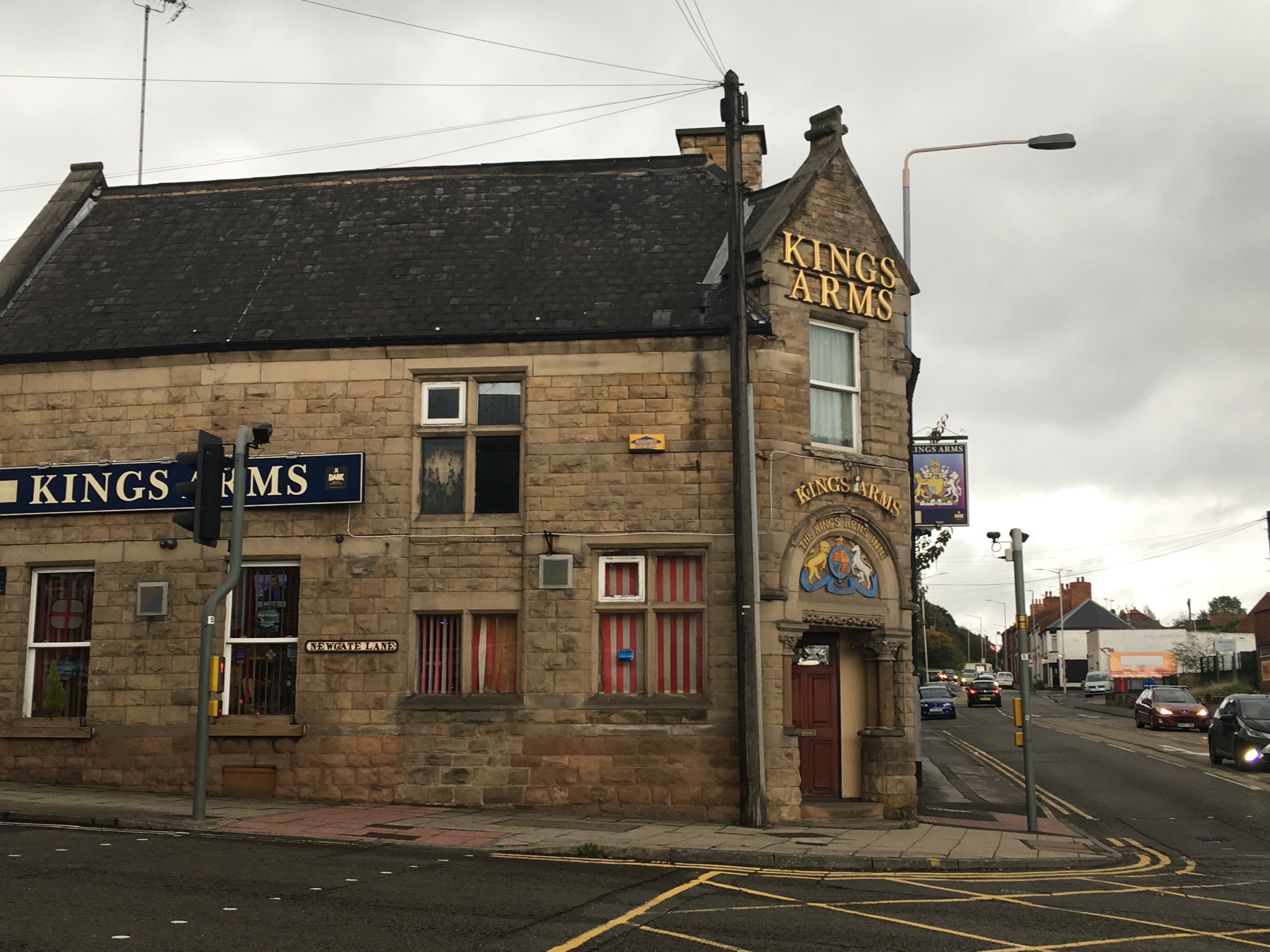

There are a couple of other buildings of Fothergill’s still standing in Mansfield, three houses on St John’s Street (A14) built in 1876, and a house on Crow Hill Drive built in 1880 (A28) both of which he built for his half-sister Mrs Frances Page Wilson. This last is now used by the NHS and is called Heatherdene, it seems to have been Fothergill’s last Mansfield building, as the majority of his work was then done in Nottingham.
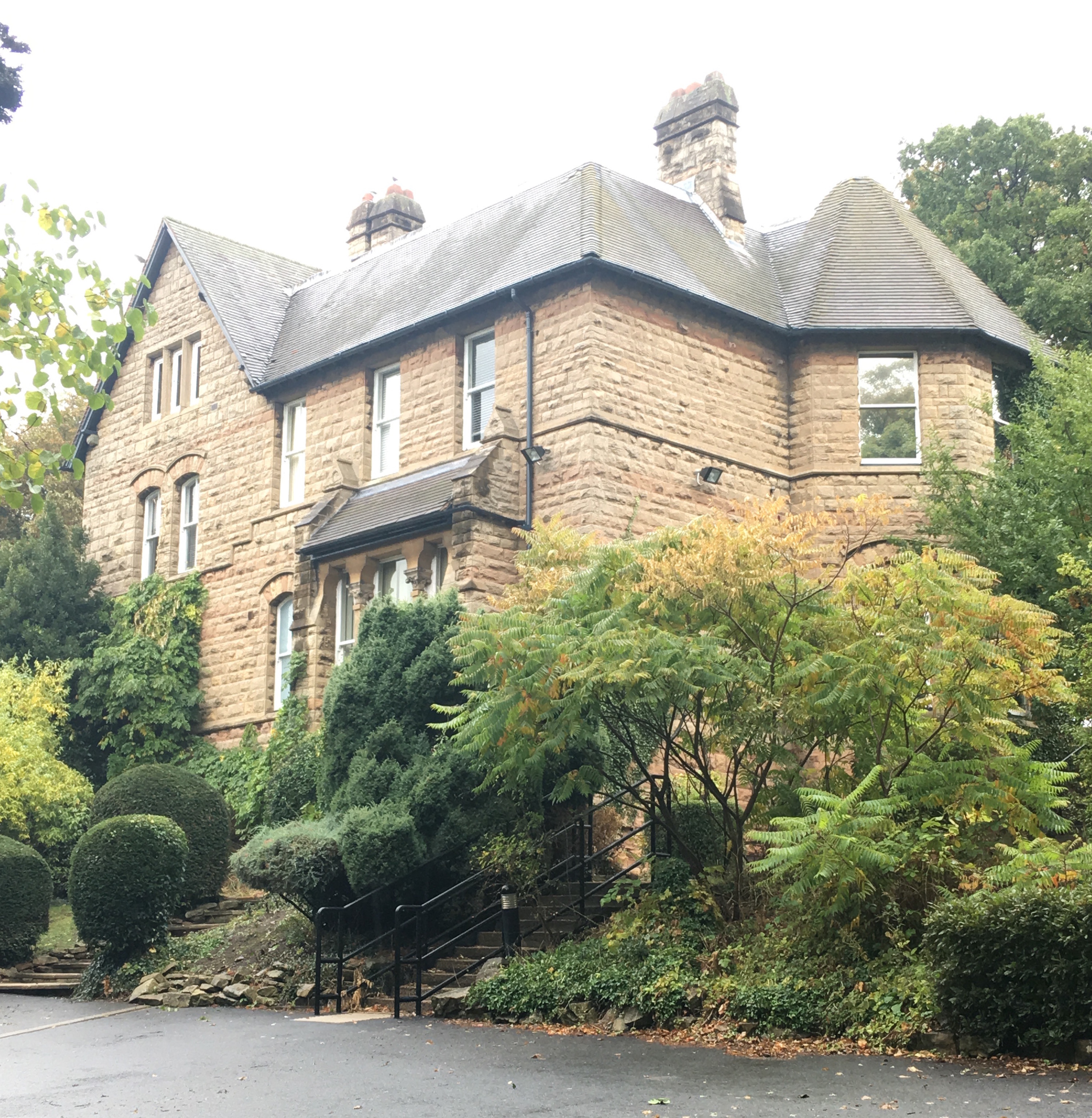
Thank you to everyone who came out to walk with me on Sunday (30 September 2018). The next walk will be on 21 October 2018 at 10am.
Get your tickets here: EVENTBRITE
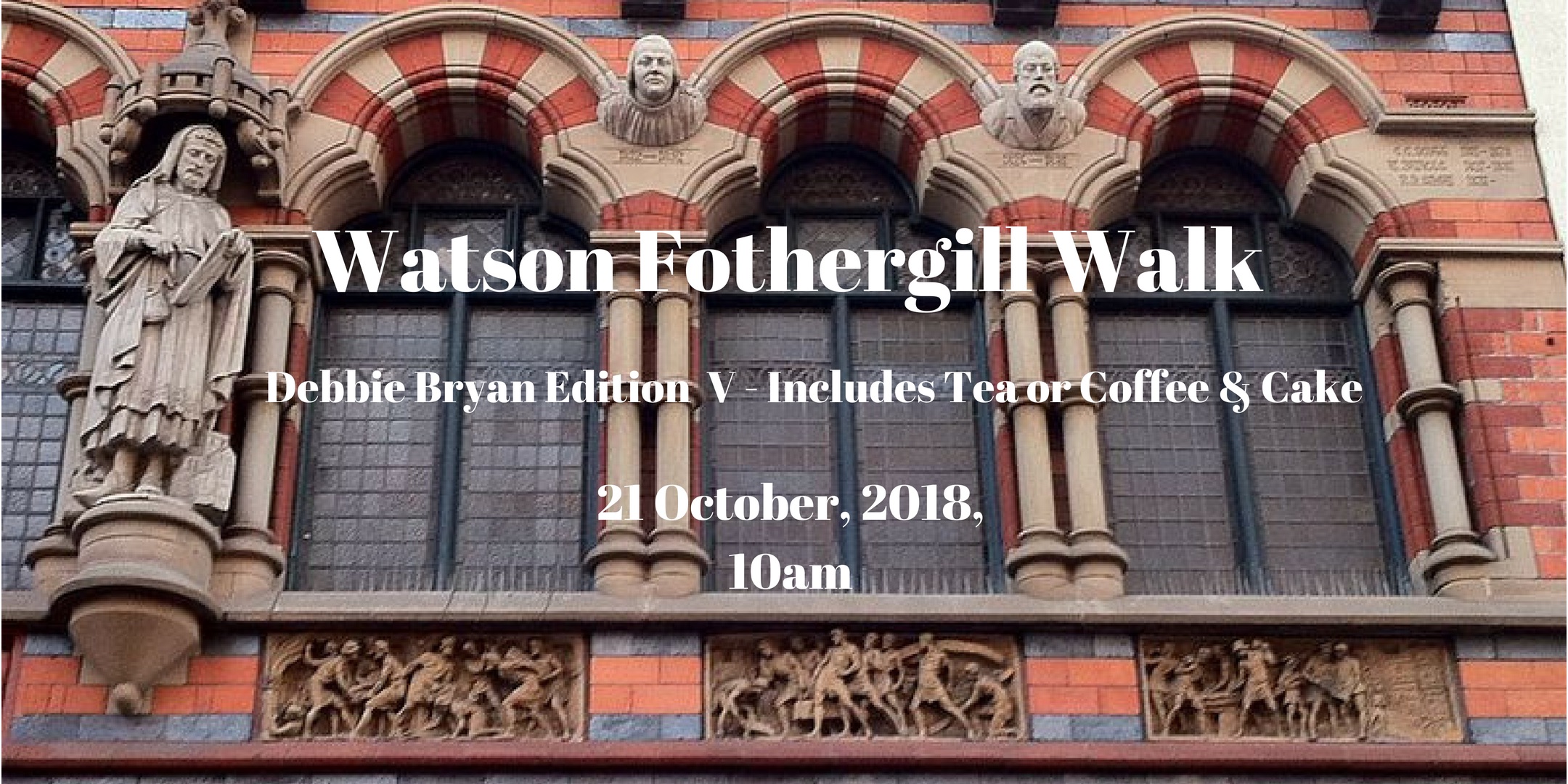
Once again the walk will conclude at Debbie Bryan with tea or coffee and cake included in your ticket. Debbie’s tea room also offers light lunches and other refreshments plus a wonderful gift emporium stocked with local crafts and unique homewares.

I am also going to be presenting an illustrated talk at Beeston Library, on 21 November at 2pm. The Watson Fothergill Virtual Guided Tour will be some highlights from the walk presented with photos in the library’s meeting room – so you can see Fothergill’s work without leaving your seat.
Tickets are £3 and available from EVENTBRITE or from Beeston Library.
The last part of this search for some of Watson Fothergill’s buildings in Nottingham lead me to Mapperley Road (after a brief stop for much needed tea at Homemade Cafe in the Pavillion on The Forest Rec.)
Up on the corner of Mansfield Road and Mapperley Road is St Andrew’s House. (A48 in the Fothergill Catalogue.) Here Fothergill designed a three storey addition to the existing dwelling, plus a single storey waiting room and consulting room on the Mapperley Road side for a Dr Stewart in 1886. Fothergill had previously noted in his diary in July 1885 that the
“stucco house corner Mapperley Road Mansfield Road sold by auction to Stewart £2,600.”
As Fothergill himself lived a little further up Mapperley Road he would have been keeping a close eye on the developments in the neighbourhood. In 1886, Dr Stewart engaged Fothergill to add ‘Three Carriage Houses with hay loft over and harness room to the rear’ (MW23). The date stone bares the owner’s initials ‘IS’.
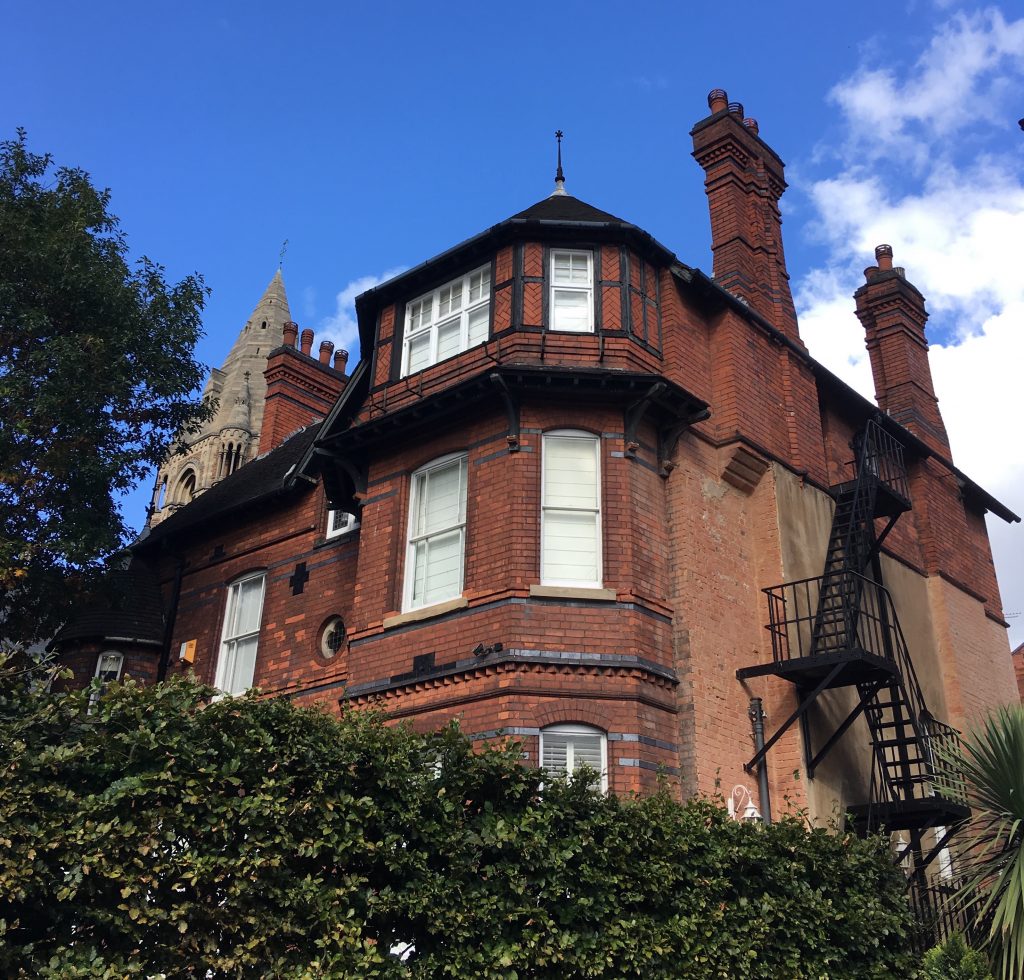
In Fothergill’s work on the house you can see several features that he was to use in his buildings – brick nogging patterns, turrets, black woodwork and bargeboards (there’s a slight Arts and Crafts feel to the porch) and large chimneys. There’s no trace of the “stucco” he mentions in his diary.
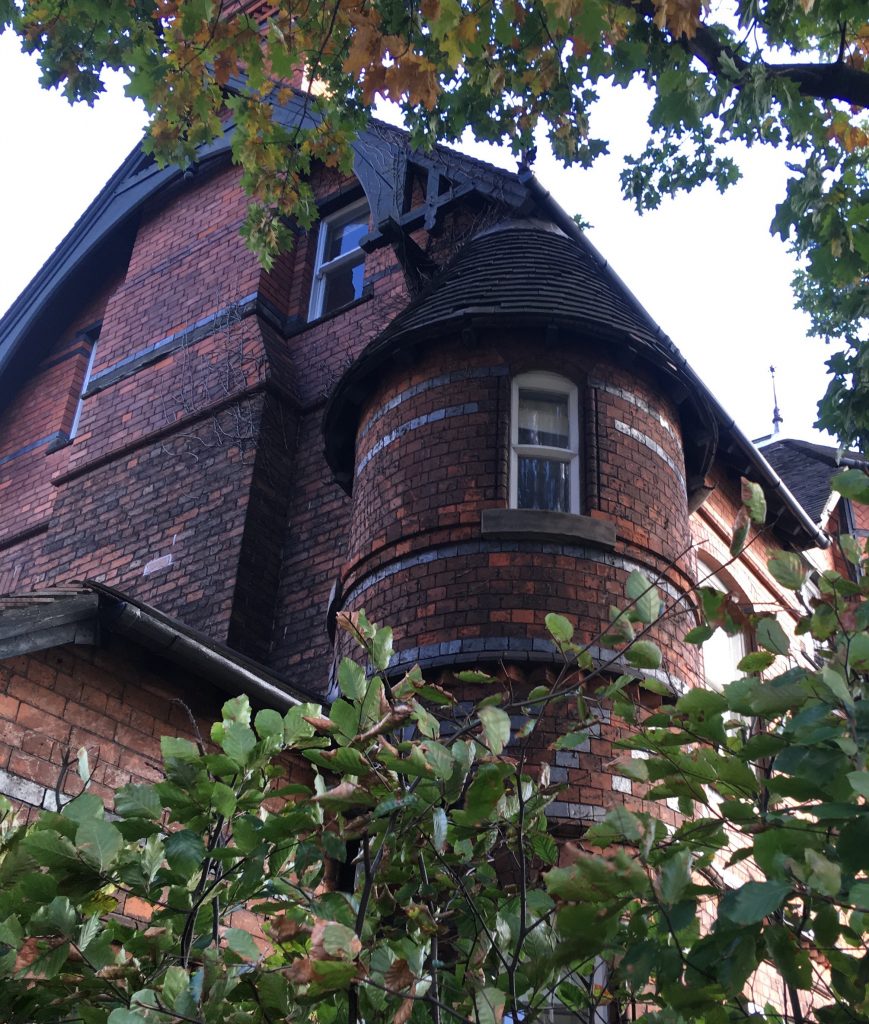
A few inconsistencies arise: The Historic England listing for the building has the owner as Dr Smart (per Ken Brand) and “St Andrews House” is now the name for a sheltered housing project close by. After Dr Stewart (I’m going to stick with the name quoted in Fothergill’s diary by Darren Turner), this building was used as an office (from circa 1929) by Thomas Cecil Howitt (1889–1968) the Hucknall-born architect responsible for the design of Nottingham’s Council House, the Raleigh head office on Lenton Boulevard and the Home Brewery building in Daybrook. (Perhaps another blog about him later!).
Back to Mapperley Road and to the site of Fothergill’s own family home. 7 Mapperley Road (A3) was the first house Fothergill built, almost as the foundation of his architectural practice. The first brick was laid in 1871. Fothergill had carefully selected the site:
“This Autumn (1870) after searching all over town for a site we liked I bought a piece of land on the northern side of Mapperley Road in Mr Patchitt’s estate.”
The Watson Family, as they still were, moved in on 26th March 1872, though the workmen were not yet out of the house. Fothergill purchased adjacent land from Thomas Birkin in 1901, to extend as far as Chestnut Grove, where they laid out an ornamental garden and a tennis court.
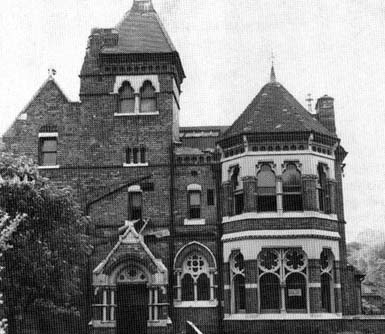
Now the only trace of Fothergill here is his name and some rather ugly maisonettes with faux-classical porches.
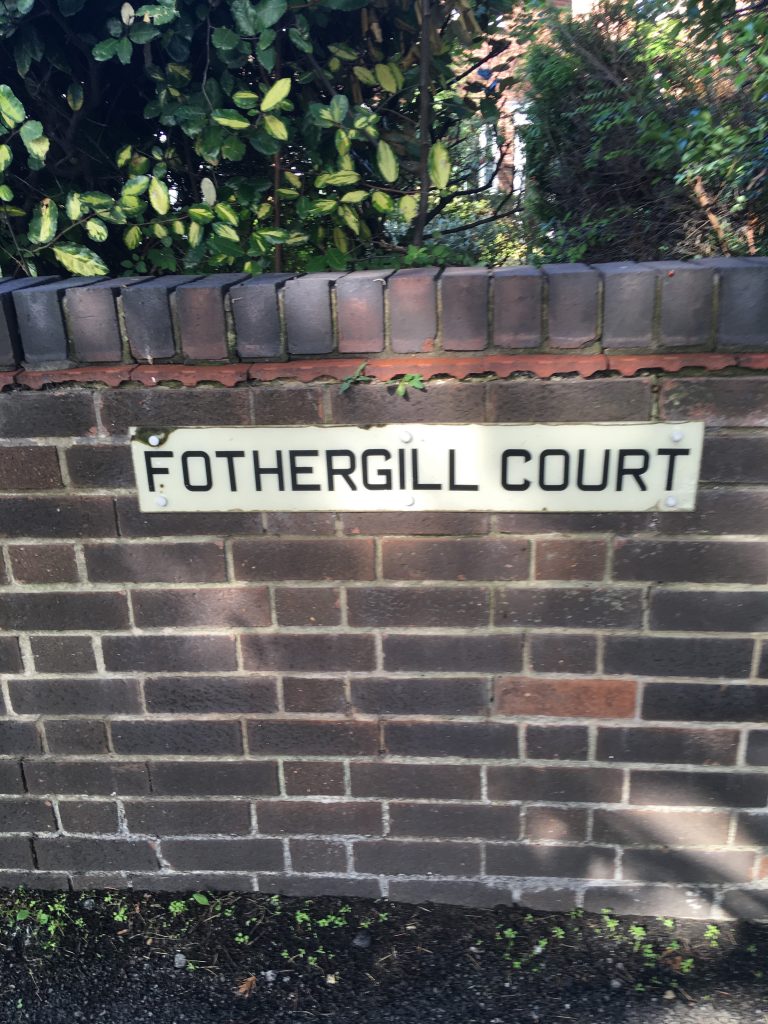
Round the corner into Elm Bank we can find one of Fothergill’s assistant Lawrence George Summers’ surviving projects. Alterations and additions to a villa, which was for a time Elm Bank Lodge Guest House (LGS9). Work was done in 1893 for a Mr Thomas Jopling. Summers added a breakfast room, kitchen and scullery with a bedroom over. Of all Summers’ sole works, says Darren Turner, this design is the closest in style to the other work coming out of Fothergill’s office. (More on Summers in future blogs.)
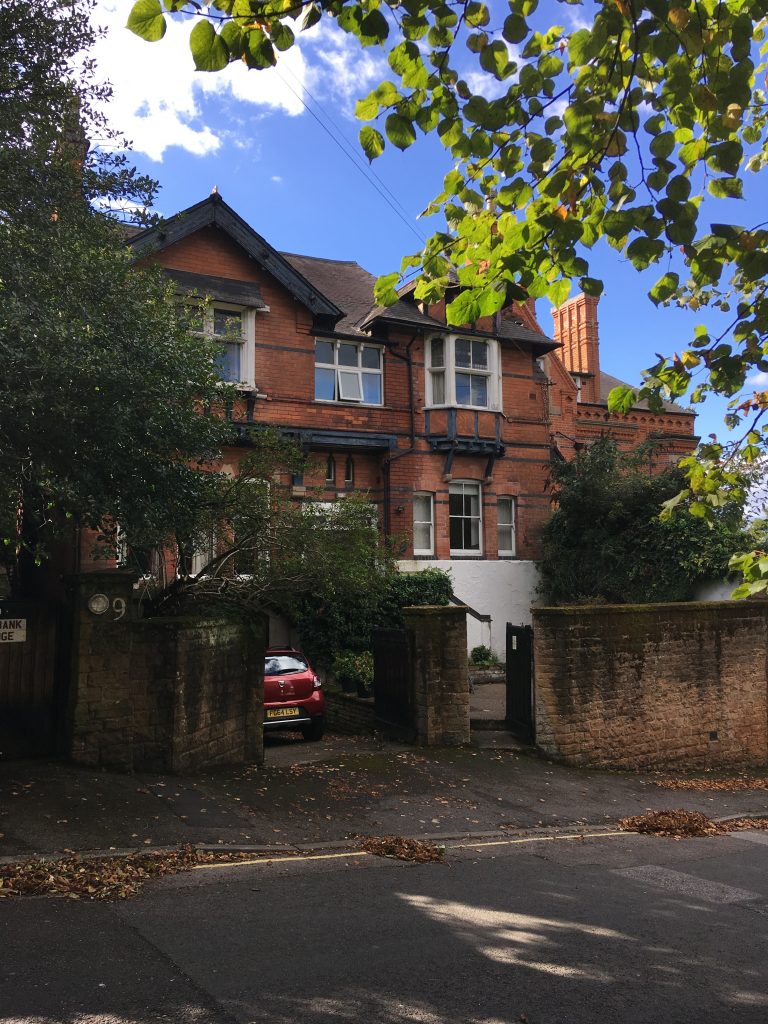
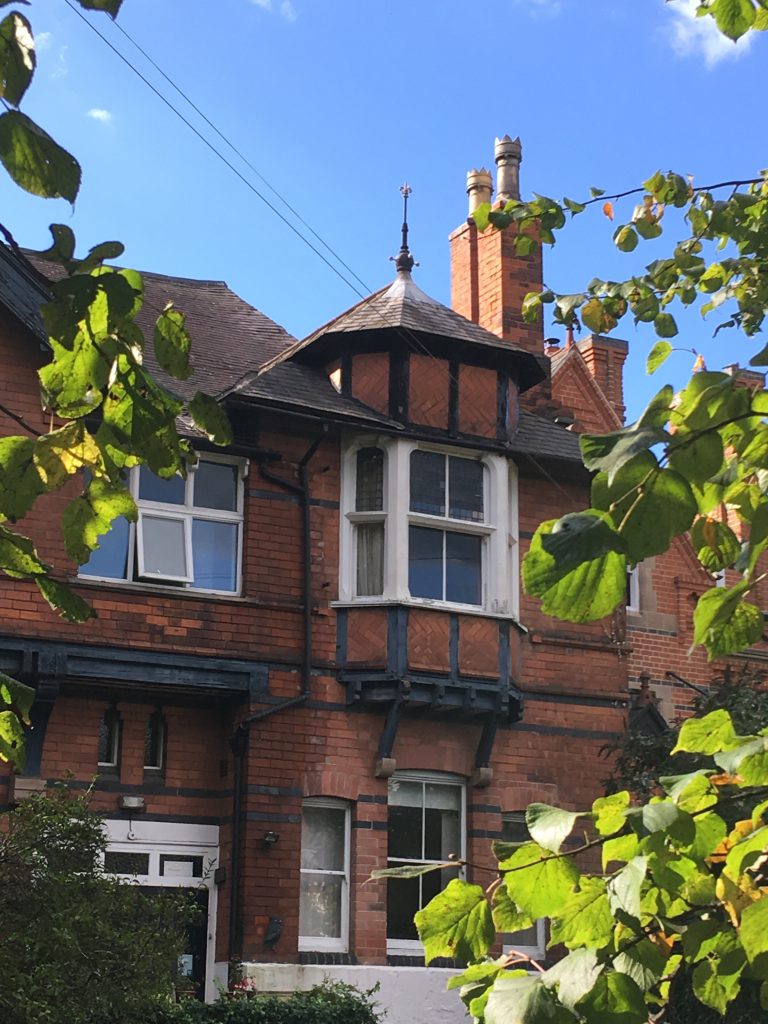
The hand of Summers can also be seen in the next house I looked at, back on Mapperley Road. ‘Beechwood’ 30A Mapperley Road (A76/ LGS20) was built for Mrs HA Wilkinson in 1905. Fothergill and Summers are listed as joint architects on the project and it is one of the last projects Fothergill would have worked on before he retired.
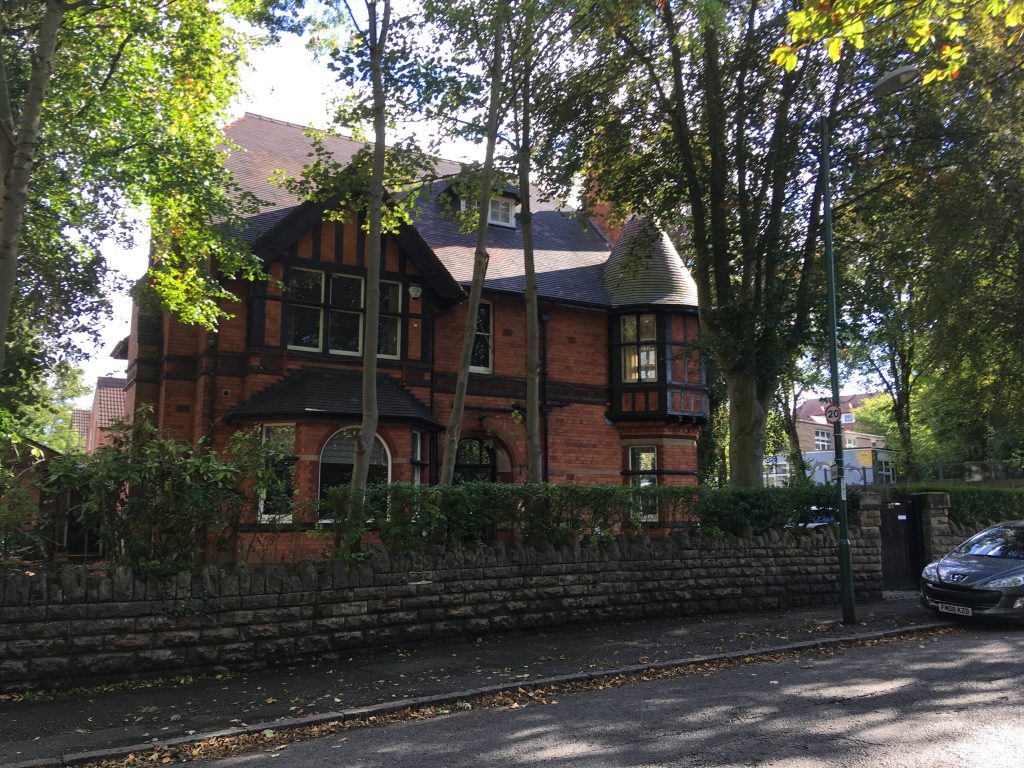
The three storey house employs recognisable Fothergill motifs, the turret, the nogging and black woodwork, but feels more domestic in scale than some of the early villas.
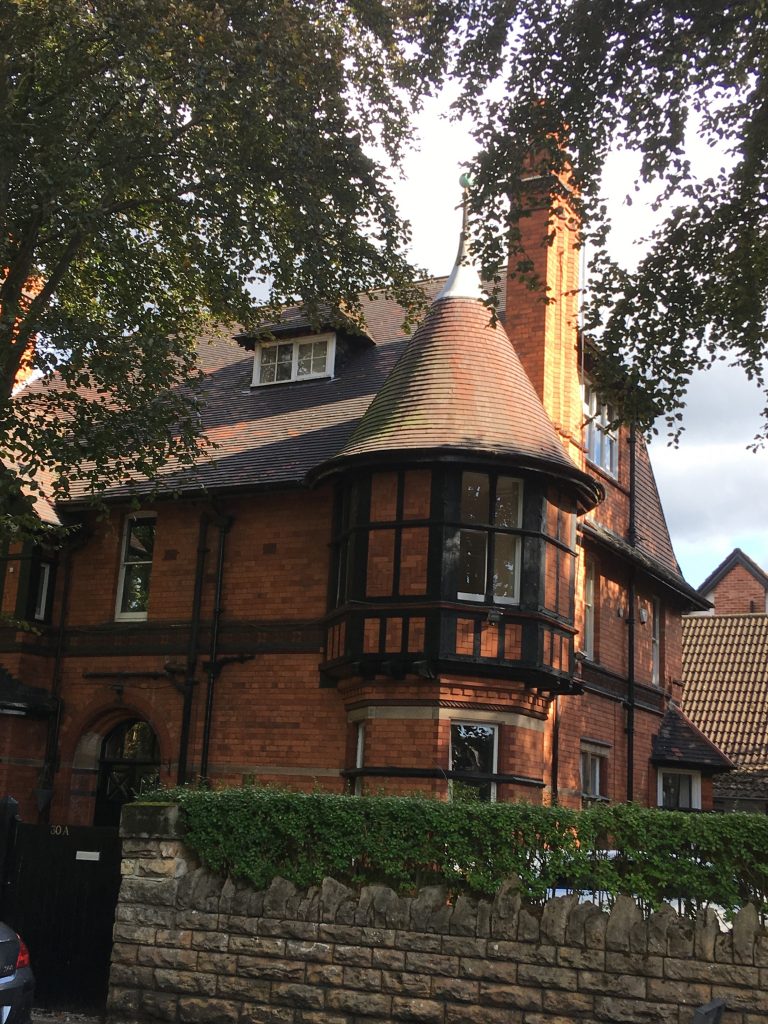
And there I started to get a blister on my foot… so this portion of the Fothergill safari is over for now. I hope to explore some other parts of Nottingham and bring you some more buildings soon.
Meanwhile the walks on 30 September are now full… Sign up to my mailing list or follow the Watson Fothergill Walk Facebook page for news of more events.
The next leg of my exploration of Nottingham’s lesser spotted Watson Fothergill buildings took me to Sherwood Rise, up from the roundabout where the Goose Fair goose is now installed for its annual roost.
The first houses you come to walking up from the roundabout are a pair of semi-detached villas at 1 & 3 Sherwood Rise, between what is now Third Avenue and Wiverton Road. Fothergill designed these for Mr John Lindley in 1894, the plans being submitted in March, (A61 in Darren Turner’s Fothergill Catalogue).
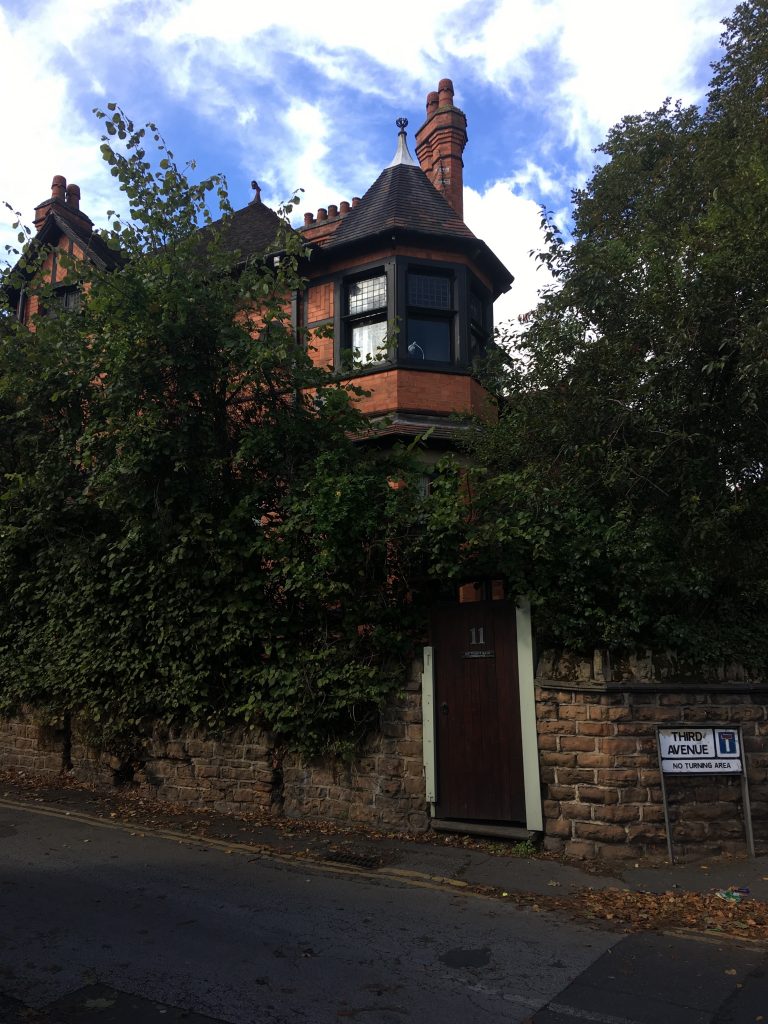
The houses are well sheltered by their gardens but are distinctively in Fothergill’s late style (his next project was his office on George Street). They were built by Messrs Bennet and Williamson between May 1894 and April 1895. The date stone reads 1894. Fothergill recorded in his diary in 1895:
“March 27. Death of John Lindley, Sherwood Rise for whom I was building 2 villas aged 62.” Then in May: “May 29th. The pair of villas (freehold) I have just built at Sherwood Rise sold by auction by John Lindley exors (executors) for £1,750. The total rental is £103.”
The properties were up for auction again in November 1898, with the advertisements making reference to Fothergill as the architect.
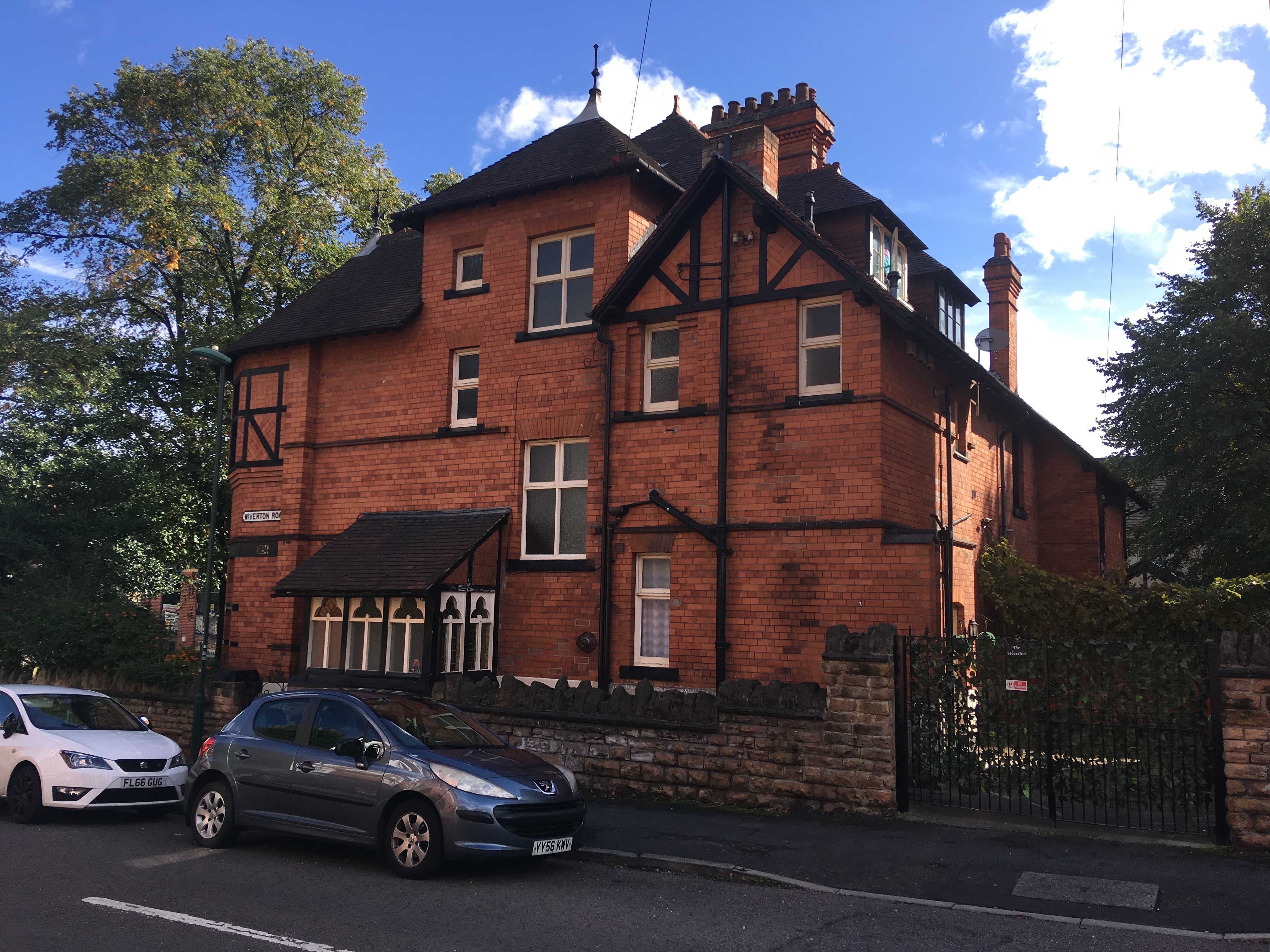
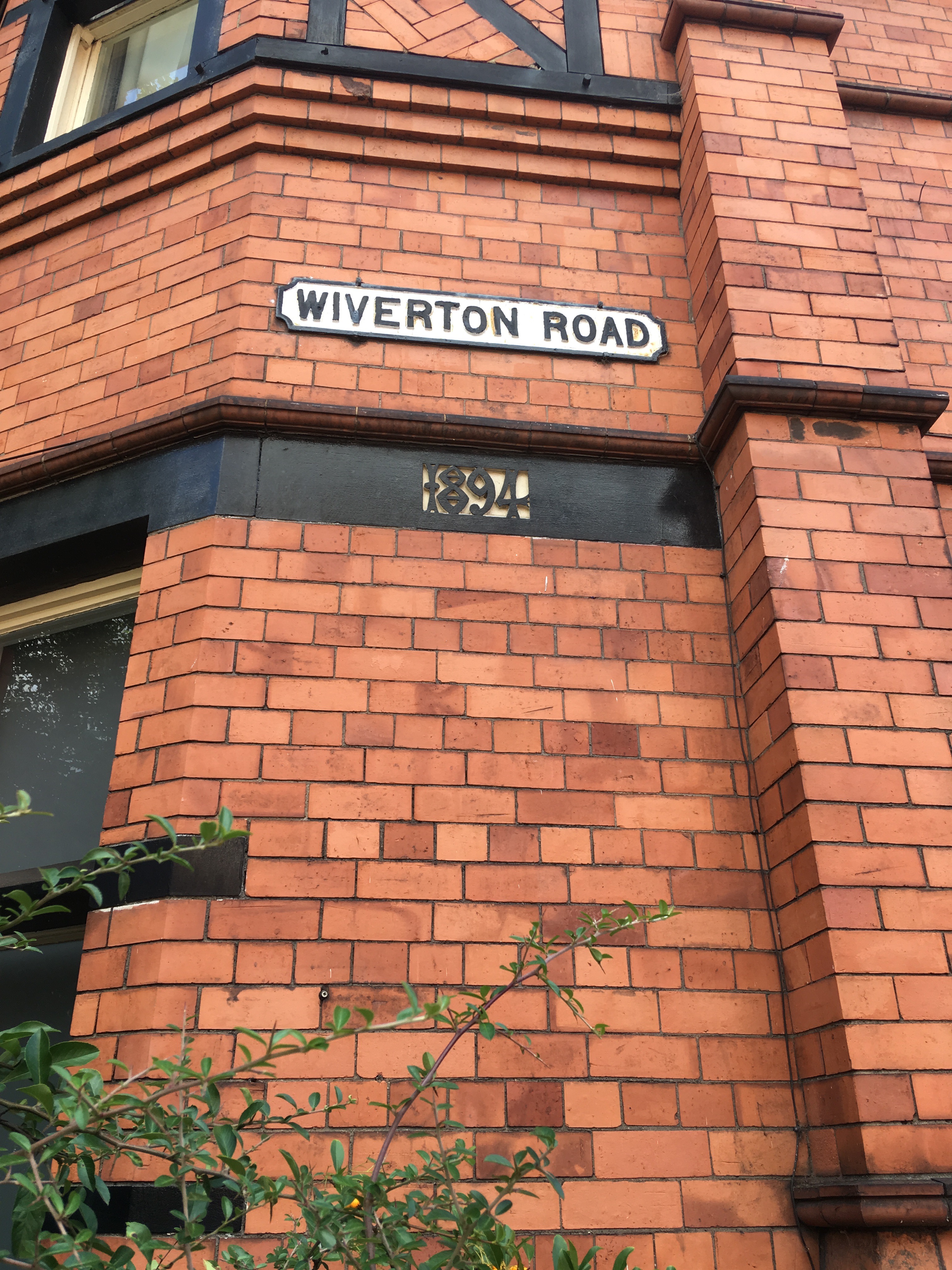
Further up Sherwood Rise, on the end of Berridge Road, we come to The Norris Homes (A56). Described in the catalogue as “Eight Ladies’ Homes”, these almshouses were built by Miss Mary Smith in memory of her brother John Norris in 1893. There are eight one bedroom homes in the development.

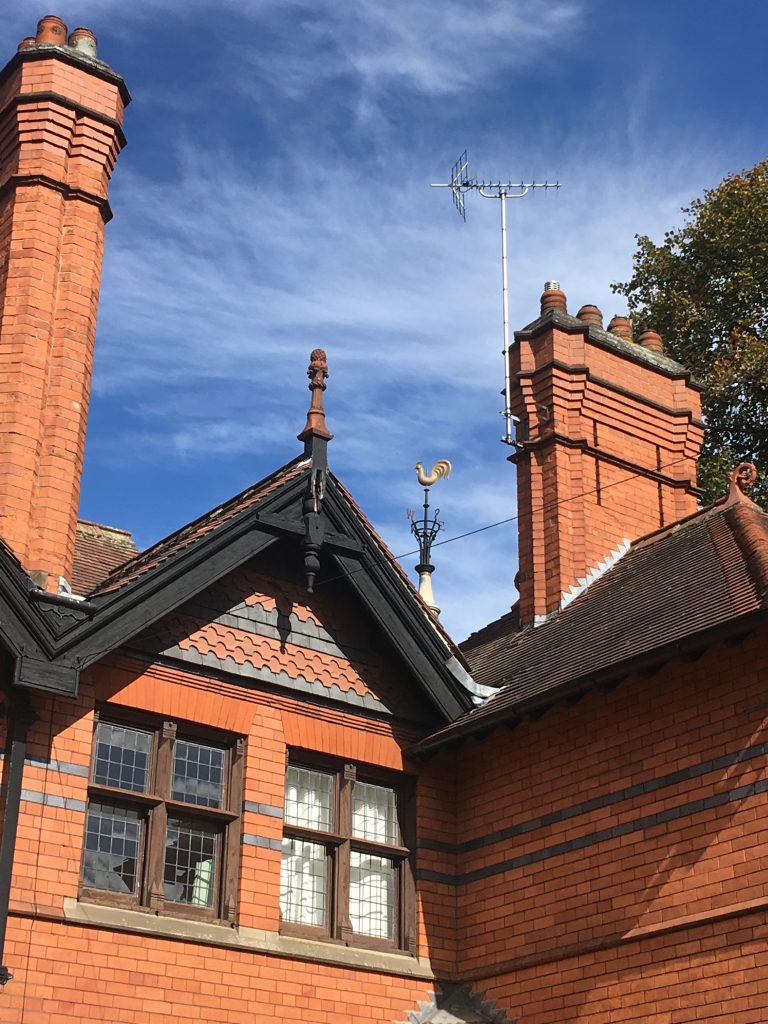
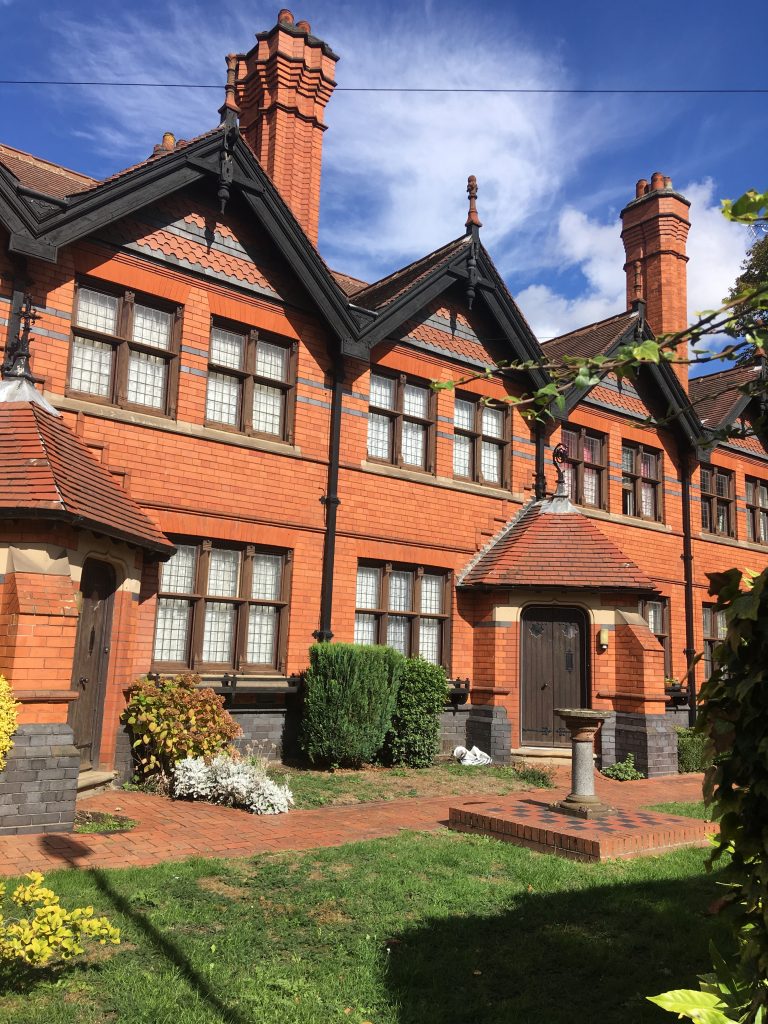
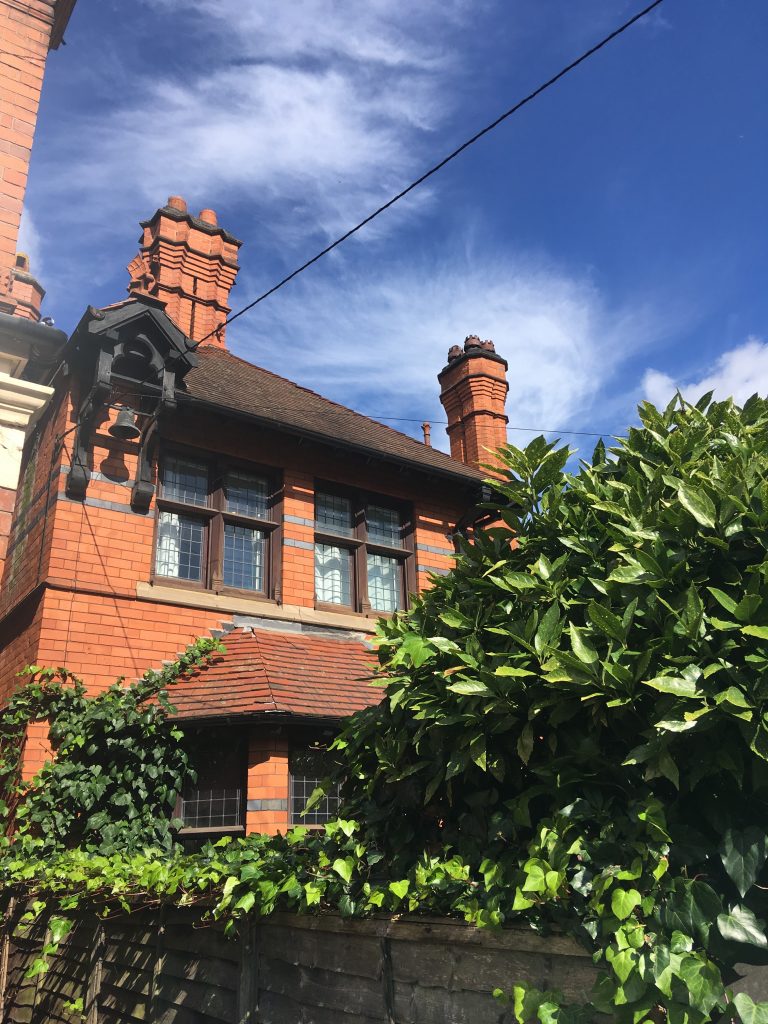
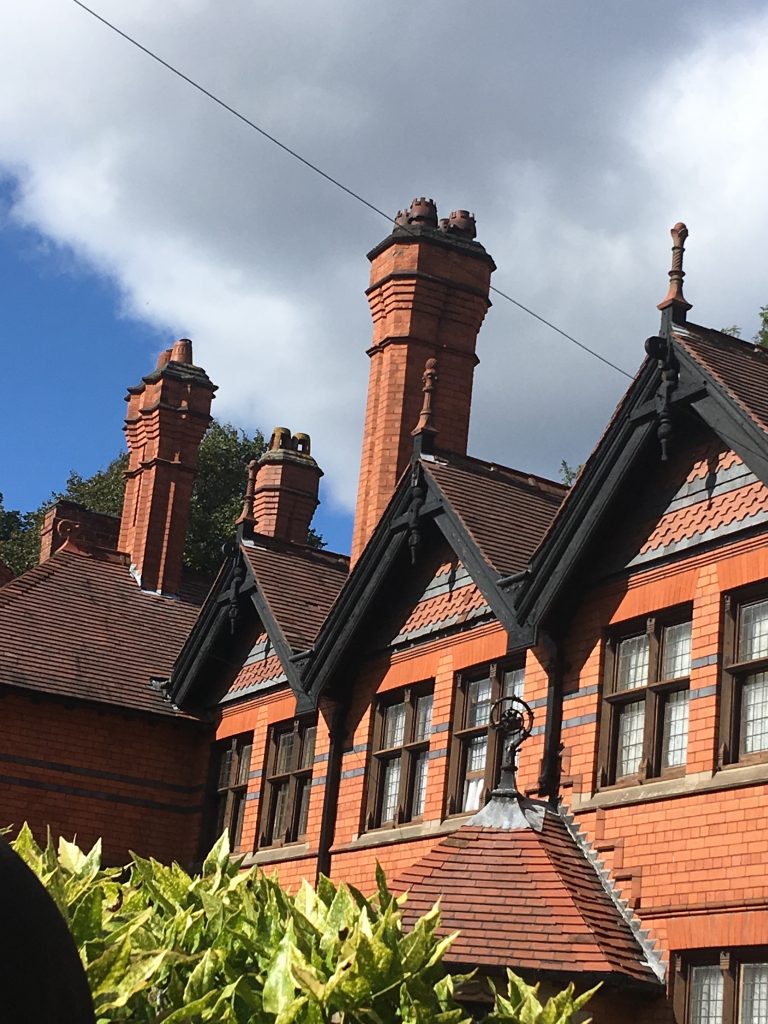
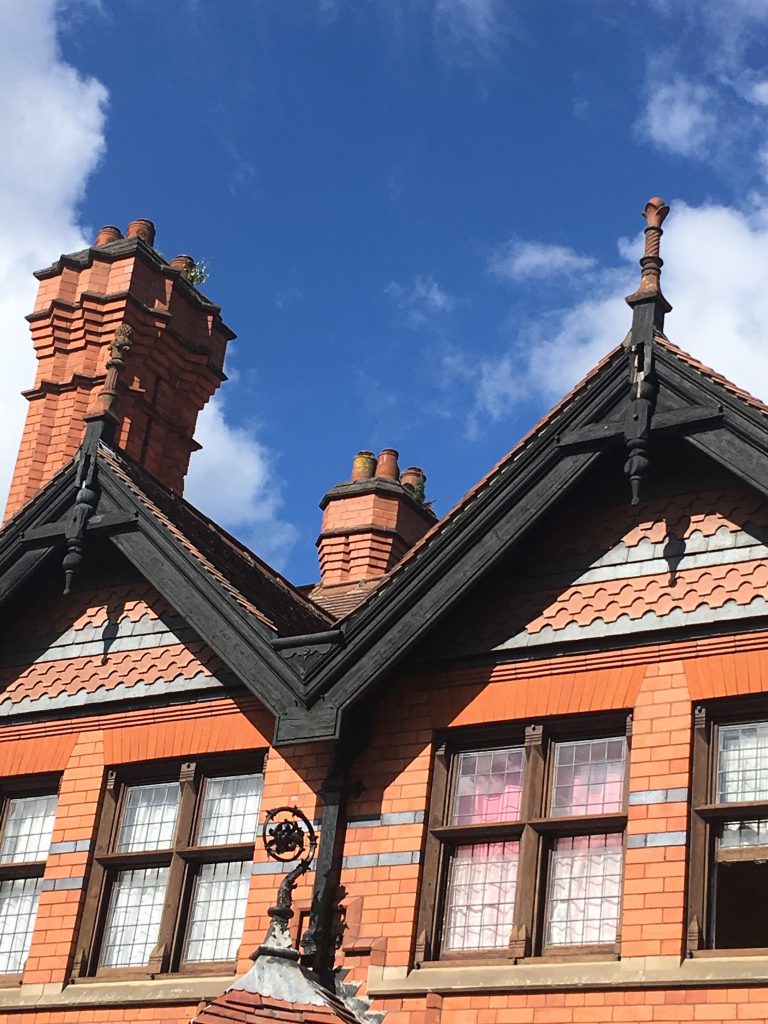
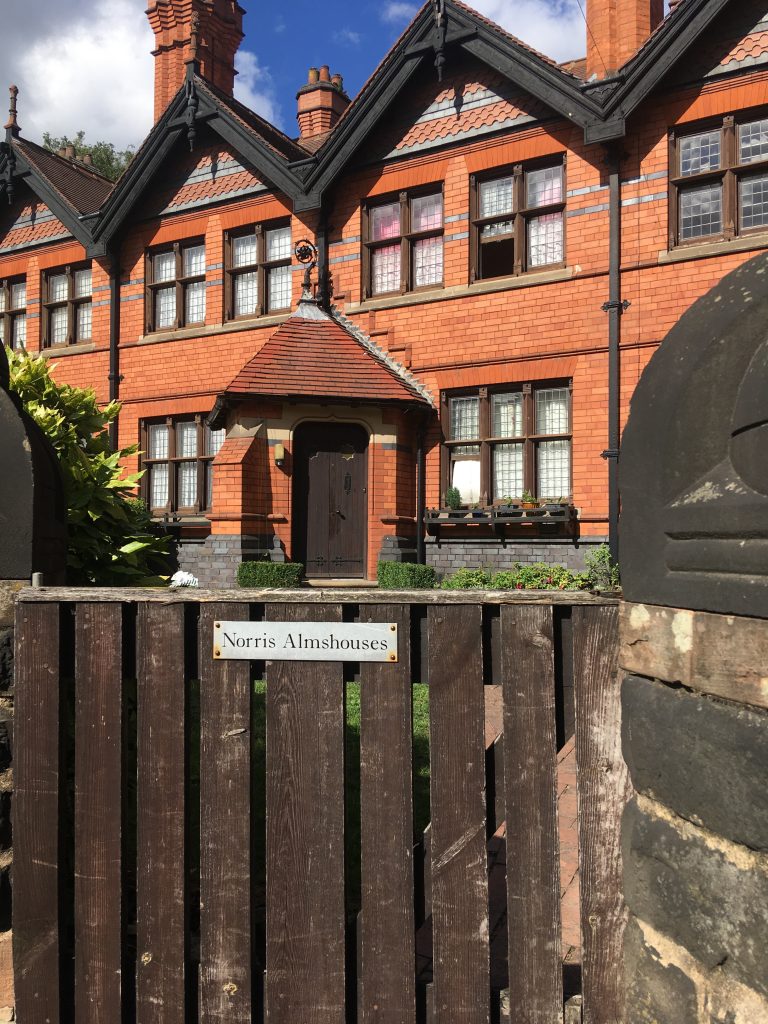
The Norris Homes are still in use as Almshouses for single women or couples aged over 60 who have lived in Nottingham. The houses were restored in 1991, with the addition of the weathercock, a sundial and a carved dragon.
The building is inscribed “Watson Fothergill, Architect”, the first time that his reversed name appears on a structure.
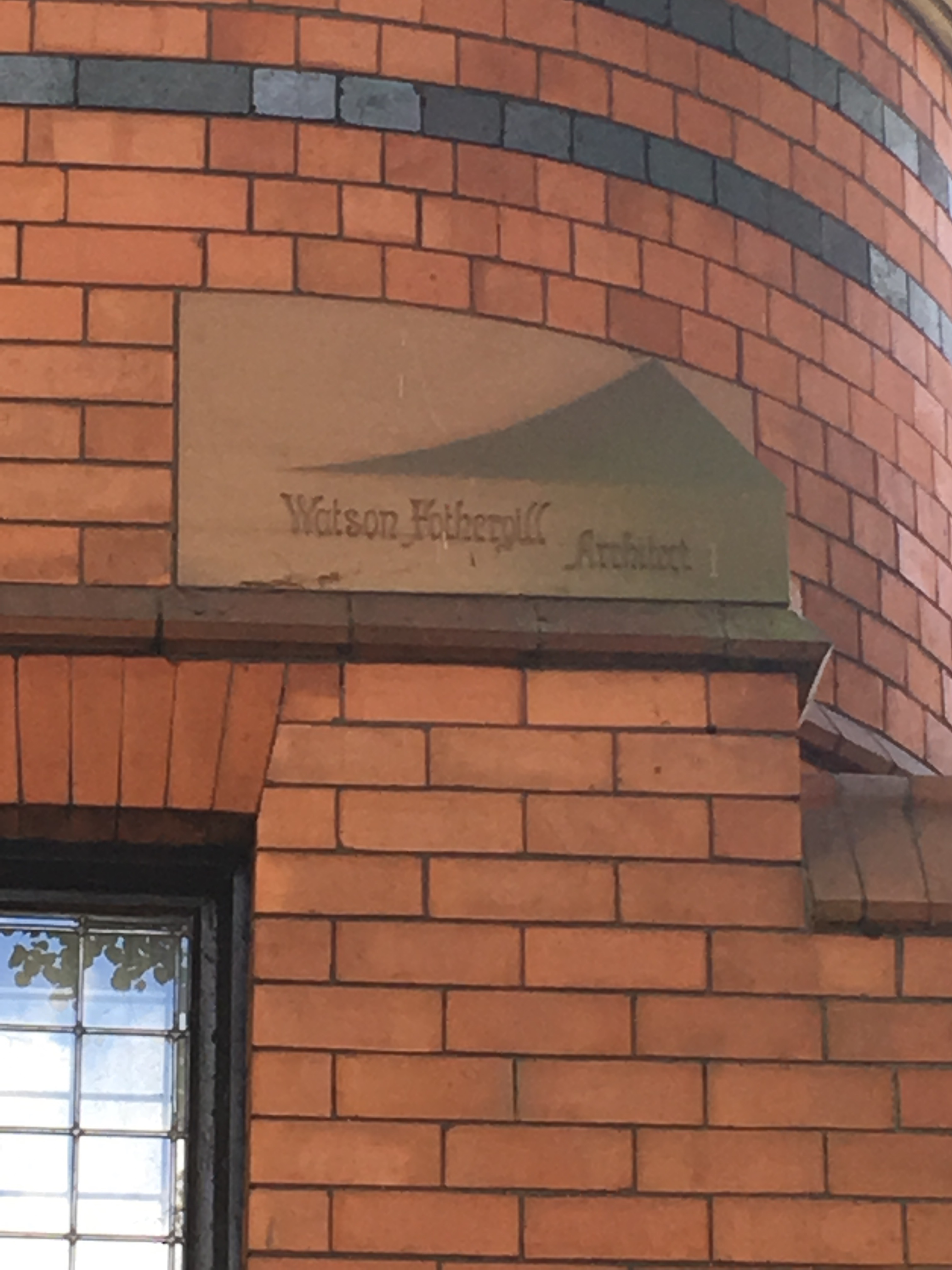
The client, Miss Mary Smith, of Bluecoat Street, remained a spinster and died in 1909. Fothergill was her executor.
A short walk into the streets off Sherwood Rise leads to Foxhall Road. Here are sixteen houses (A74), for Mr J H Willatt Esq. The planning application was submitted in 1901 and inspections were noted in 1902. The houses are in small terraces of 4 houses each.
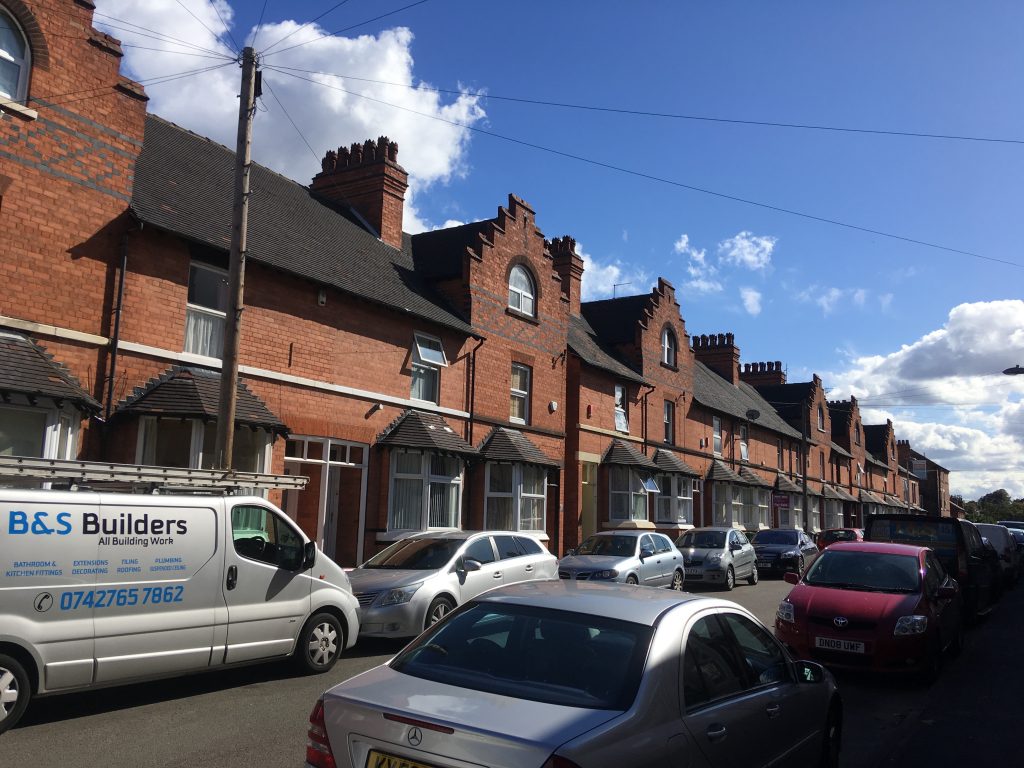
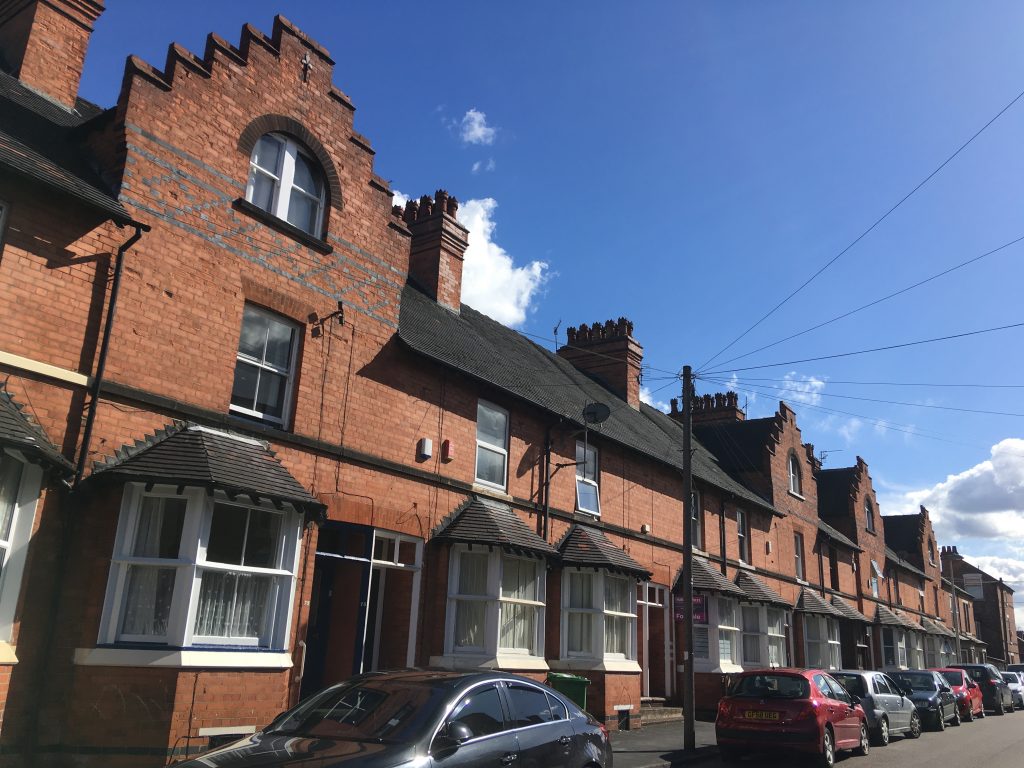
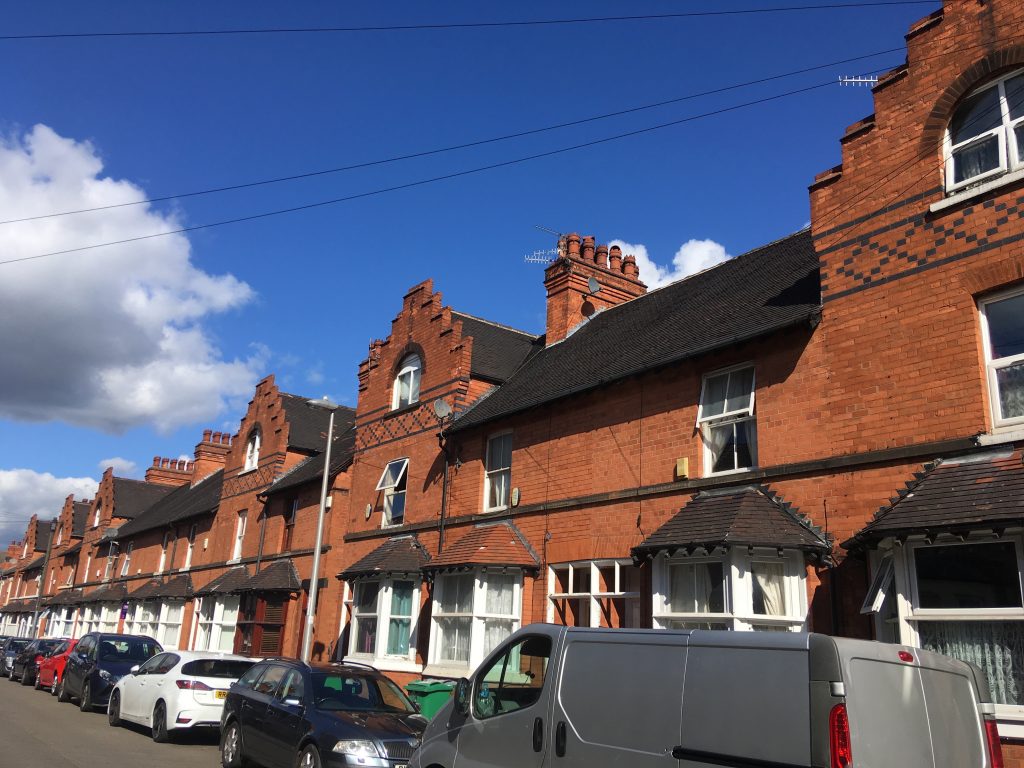
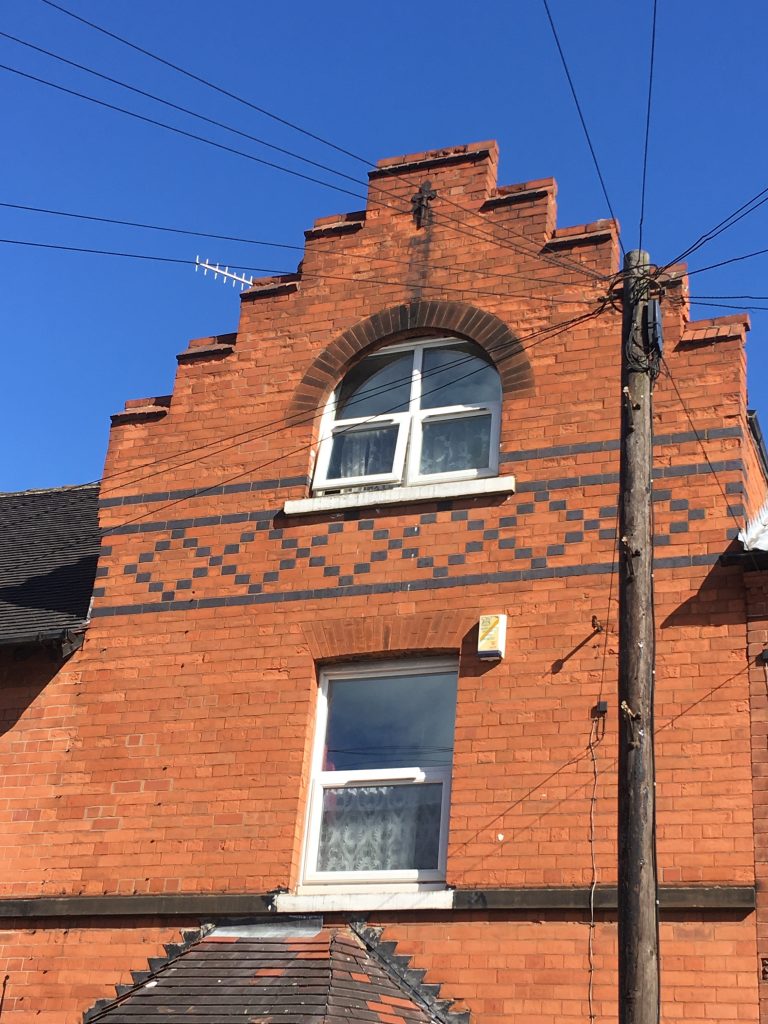
The houses stand out from the other terraces nearby, with their stepped gables and a polychrome diamond pattern in the brickwork.
One more installment of this Safari still to come… Meanwhile join me for the latest city centre Watson Fothergill Walks in Nottingham on 30 September 2018 at 10am & 1pm (still a couple of tickets available for 10am).
Starting from Sherwood I decided to explore a few of Fothergill’s buildings on foot… it turned into something of an urban safari. Using Darren Turner’s excellent catalogue of Fothergill’s works as my guide, I wandered down Mansfield Road to get a little closer to some of the houses that remain in the area. (I’ll give the catalogue numbers assigned in the book so you can read along at home…)
Starting from Sherwood I decided to explore a few of Fothergill’s buildings on foot… it turned into something of an urban safari. Using Darren Turner’s excellent catalogue of Fothergill’s works as my guide, I wandered down Mansfield Road to get a little closer to some of the houses that remain in the area. (I’ll give the catalogue numbers assigned in the book so you can read along at home…)
Firstly, what are thought to be be the final works to come out of Fothergill’s office before his retirement in 1906, a terrace of 4 three storey houses on the corner of Mansfield Road and Bingham Road (A77). The date stones are clearly marked but otherwise these aren’t in great condition.
Further down at 409 & 411 Mansfield Road, (A46) is the earlier pair of three storey villas built for Mr JJ Adams in 1886, these are more recognisably Fothergill in look and one has been nicely cleaned. The polychrome brick patterns and the black wooden details are the giveaway. There are a few tiny gothic touches in the windows too that mark them out.
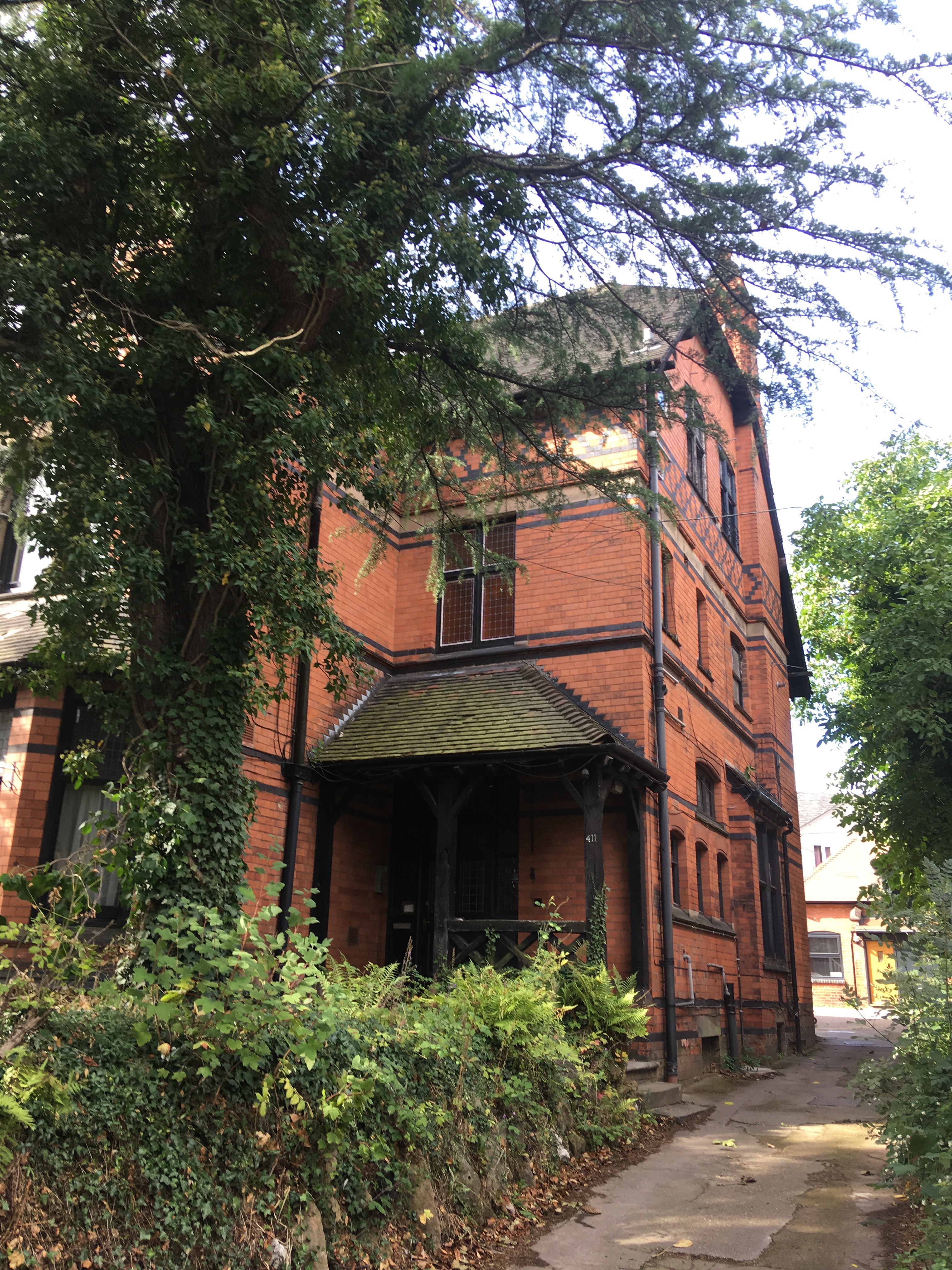
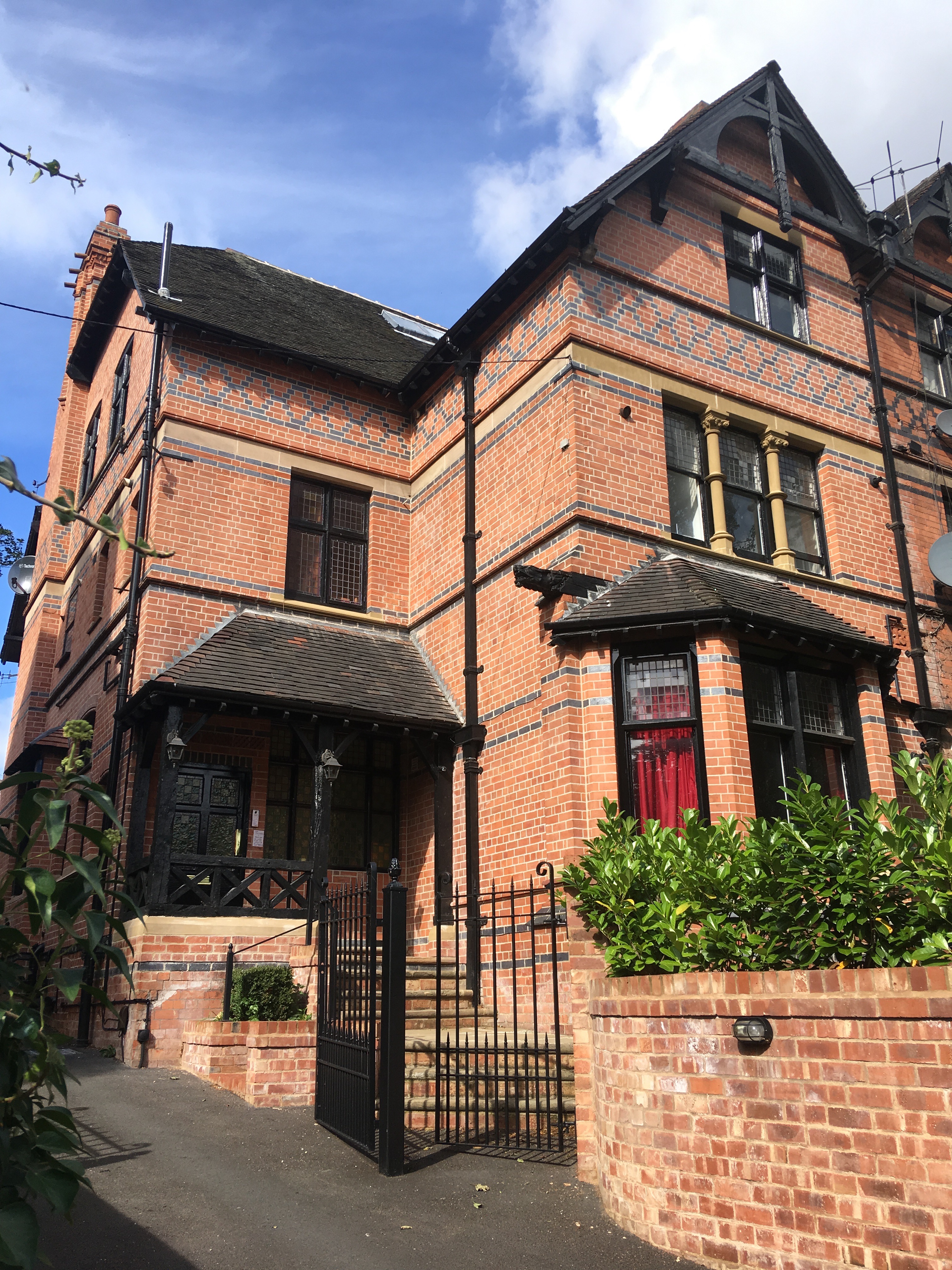
Next on this trail is the impressive Clawson Lodge, now the Ukrainian Centre (A43). A gentleman who was having a tea break out on the drive invited me in for a closer look, and I nervously snapped a couple of photos of the front of the house. Clawson Lodge was built for Mr Francis Adams Doubleday, the lace manufacturer for whom Fothergill also built Milbie House on Pilcher Gate (as visited on the Watson Fothergill Walk).
Clawson Lodge was built in 1885, when Fothergill was still Fothergill Watson, working out of his office on Clinton Street. The lych gate and garden wall are also included on the grade II listing of the property. This house already shows some features that would become instantly recognisable as Fothergill touches, including striking black wooden gables with barge boards and brick nogging.
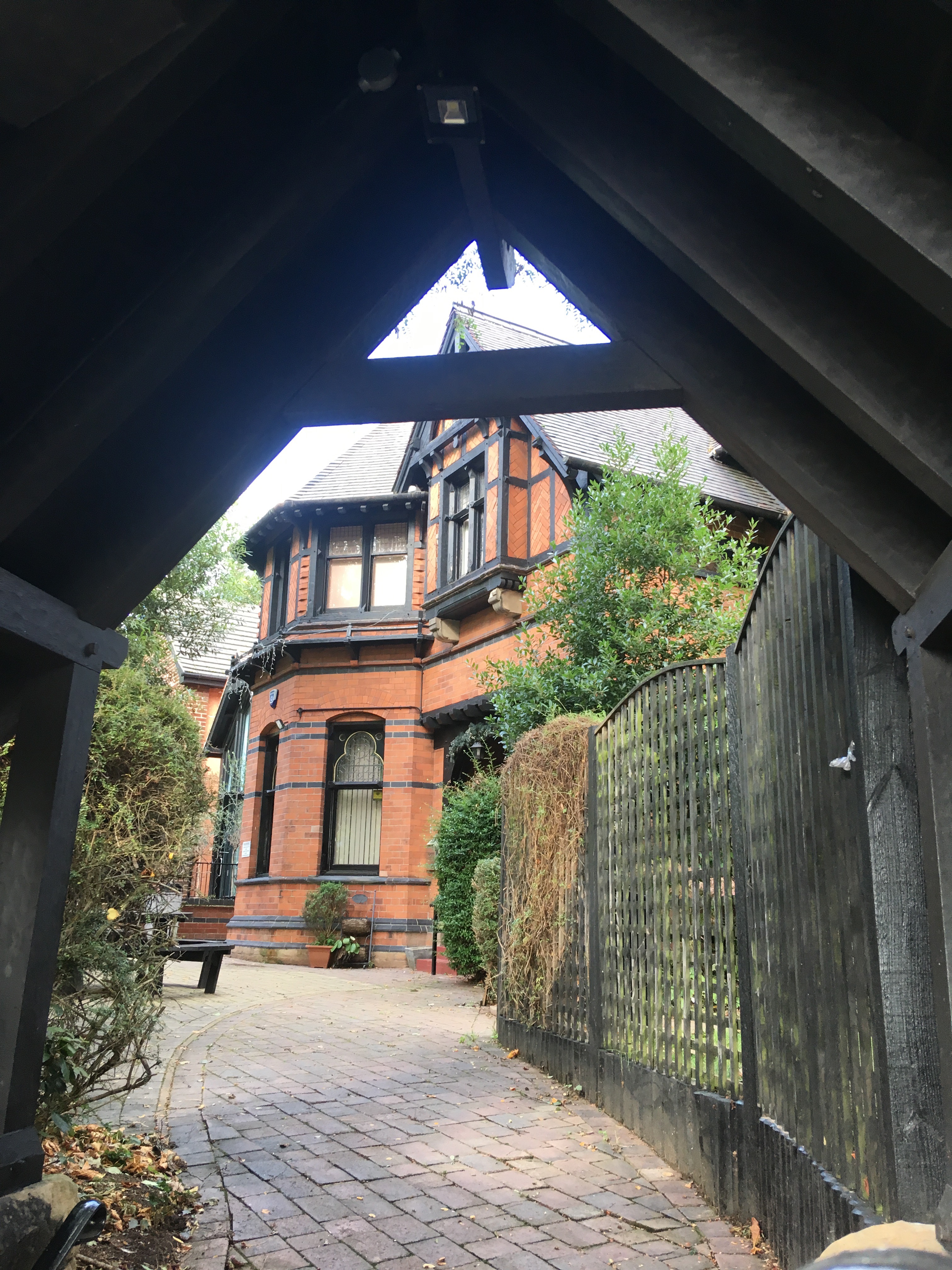
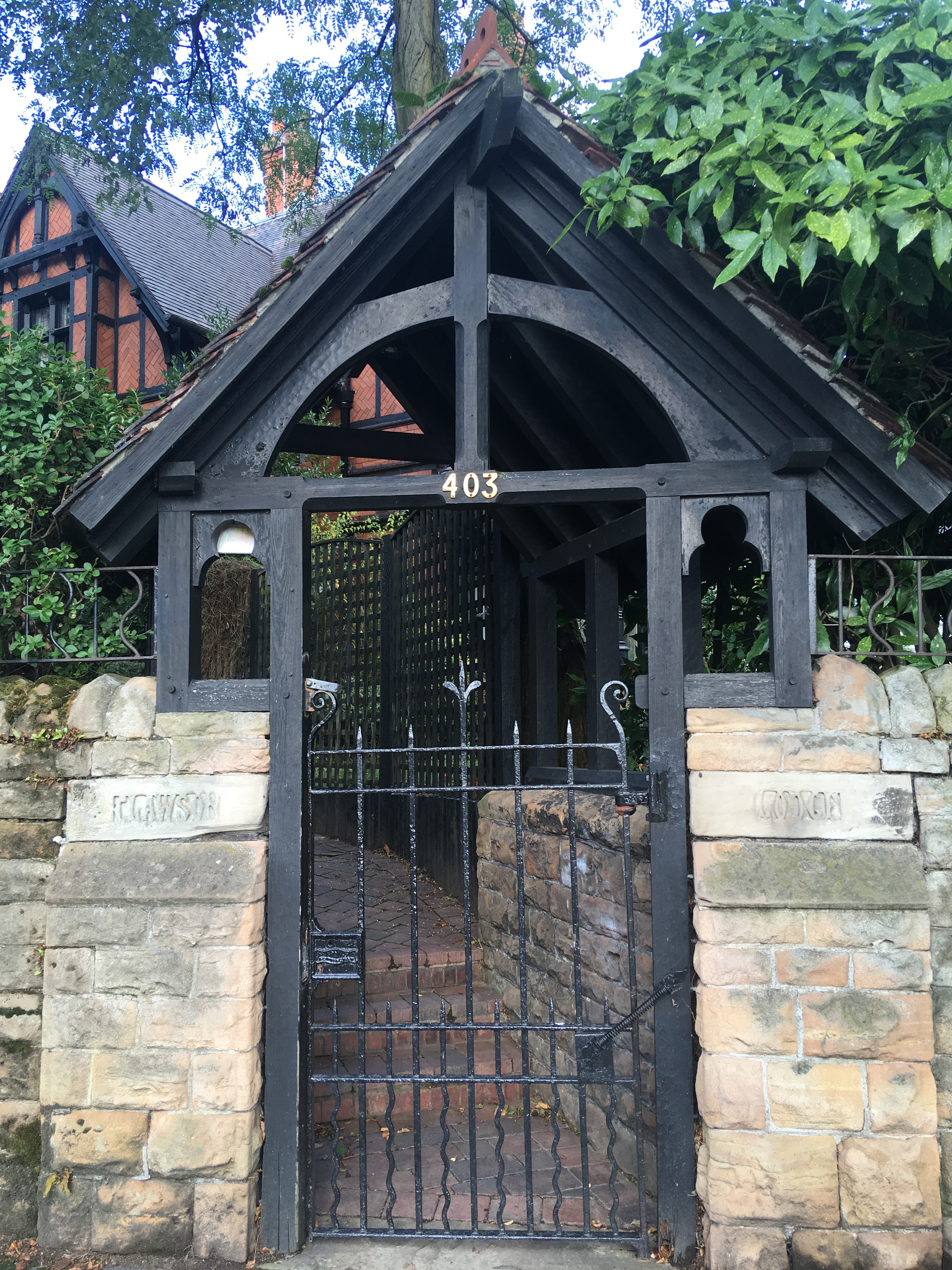
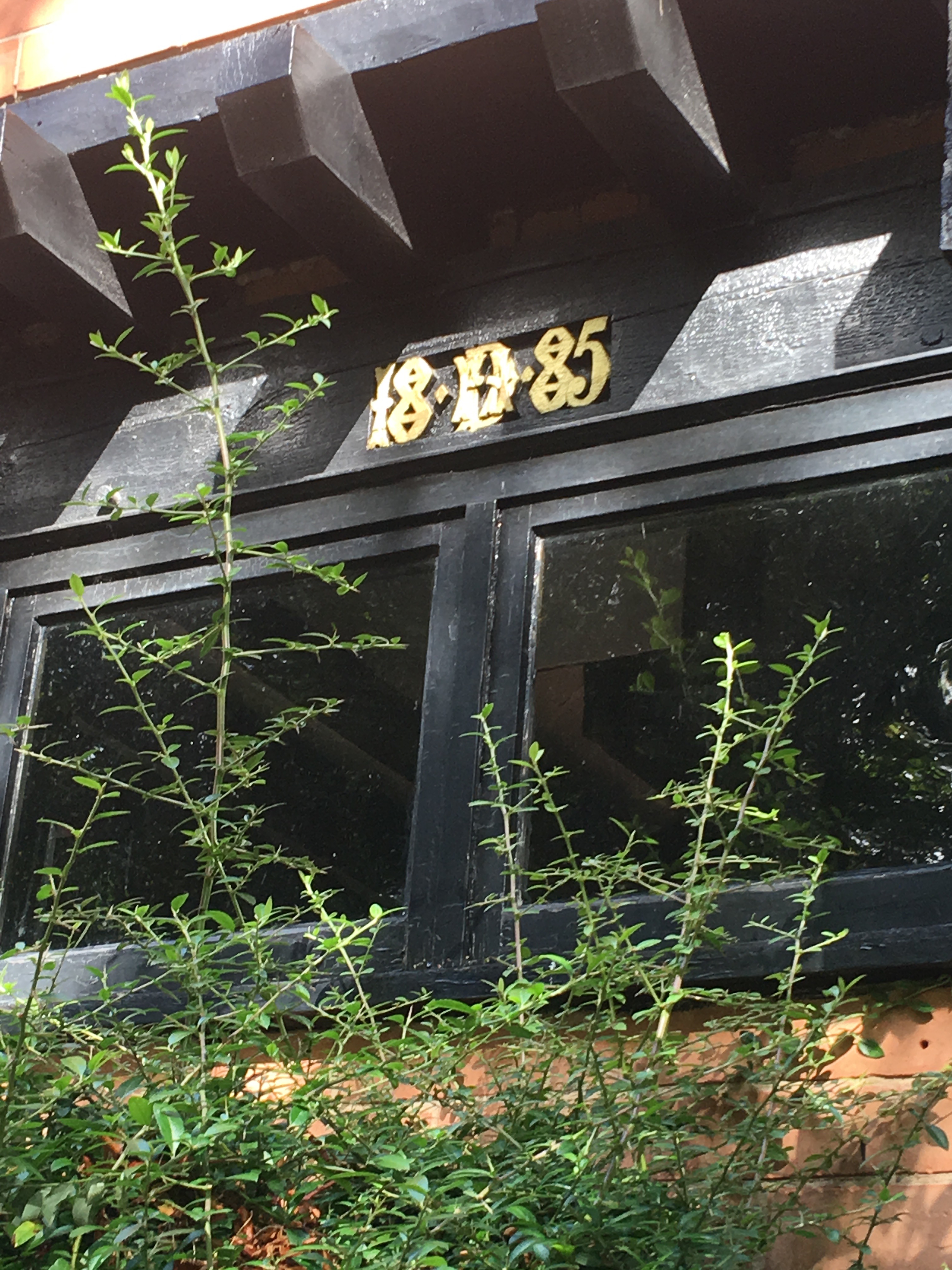
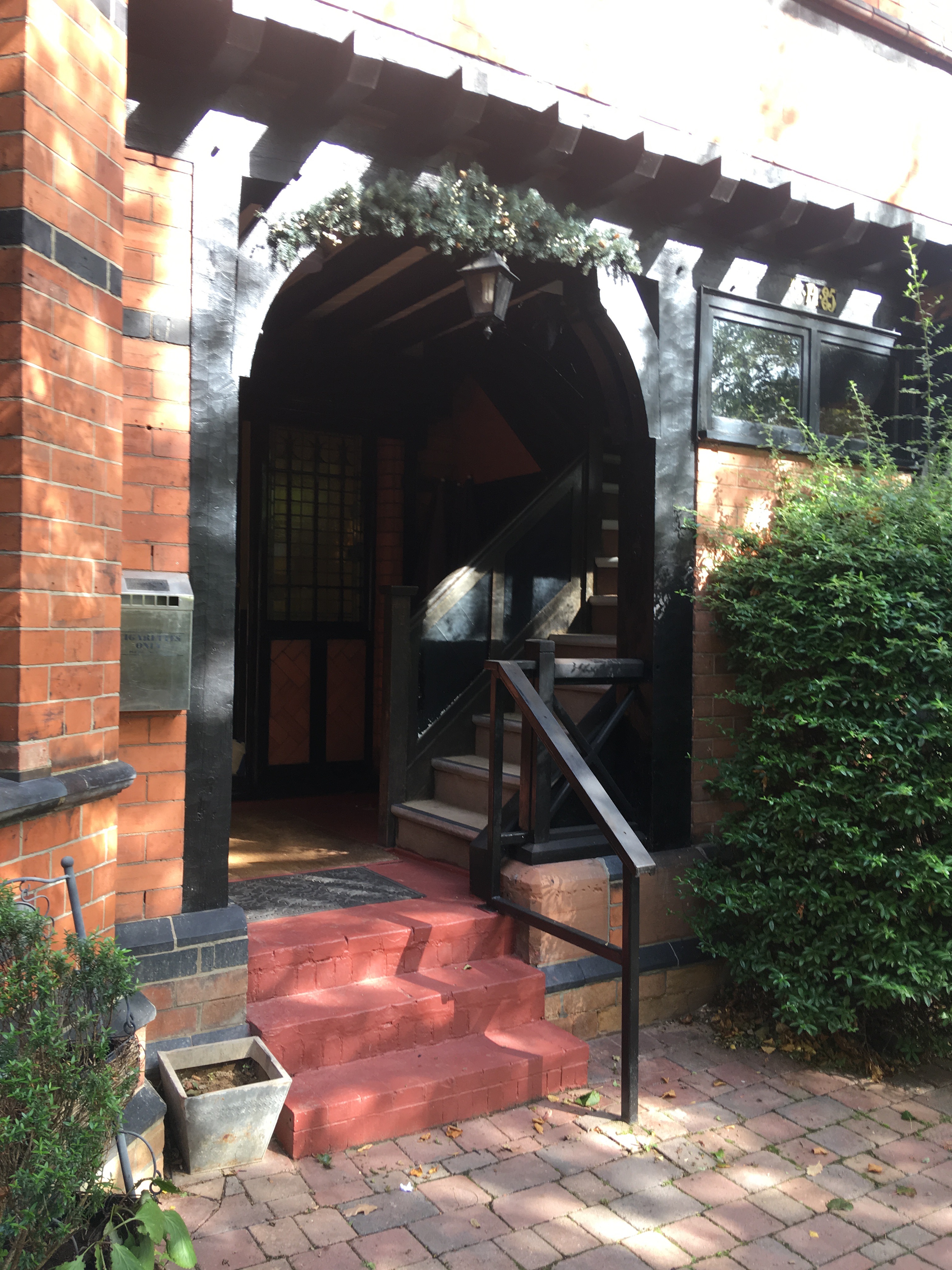
A little further into Carrington, we find Yew Tree Avenue, now a rough track leading to two pairs of semi-detached villas built in 1881, possibly the earliest Fothergill houses still standing in Nottingham (A33). These four houses now seem to have been made into flats. They were originally built for Mr Luke Scatergood. There are some Fothergill hints, the brick patterns and the gabled dormers, but his style isn’t yet quite fully formed.
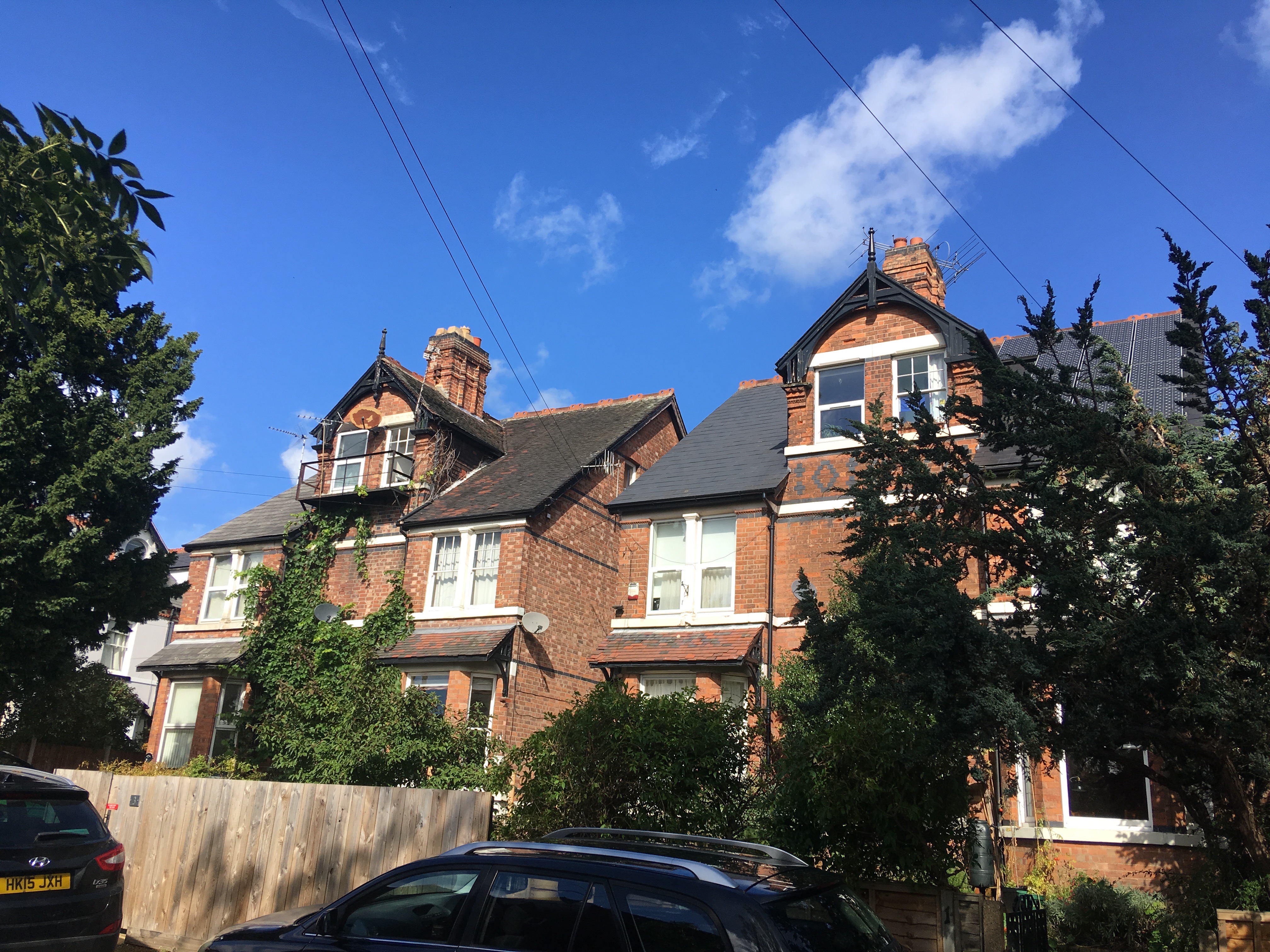
Previously on the other side of Yew Tree Avenue, Fothergill had built another pair of villas (A31, 1881) for Mr Thomas Guy. But these have been demolished and the site is now a carpark/ car dealership. More Fothergills of Nottingham in the next installment!
Meanwhile the next walks, touring the Watson Fothergill buildings of Nottingham city centre, take place on 30 Septmber 2018. There are the last couple of tickets left for the 10am here: EVENTBRITE
Due to the previous walk being sold out, I’ve added another walk in the afternoon on 30 September 2018. Meet for 1pm at Nottingham Tourism Centre, tickets are £12 each and once again the walk will finish at Debbie Bryan with tea or coffee and cake included. Please let us know if you have any special dietry requirements (Vegan, De-caf, Gluten-Free etc all available.)
The 1pm walk is now full but there are 2 tickets open on the 10am HERE
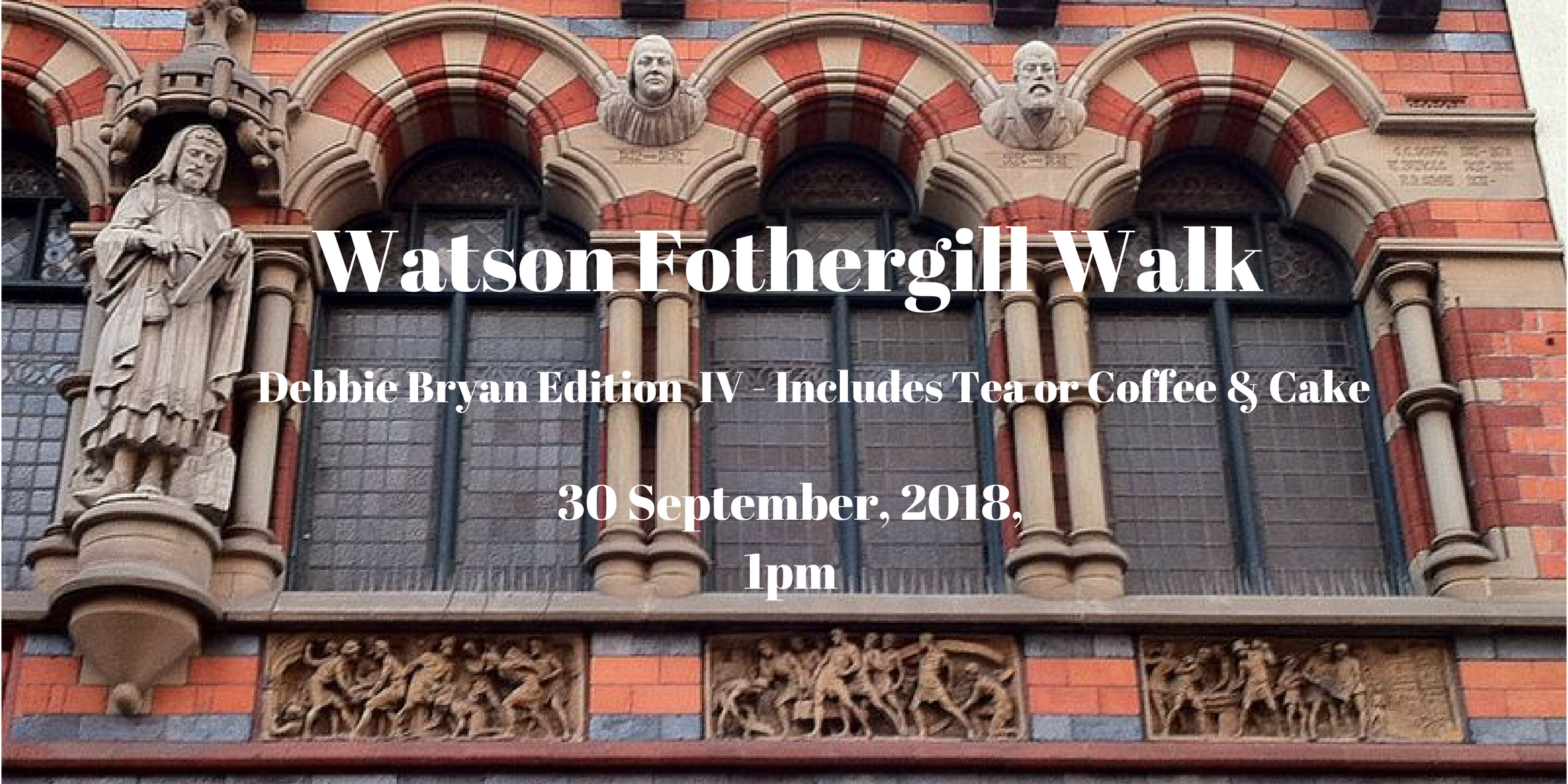
I’ve been asked about accessibility for wheelchairs, mobility scooters and prams – The route is all on pavements and on pedestrian areas. There are some steps into Debbie Bryan’s premises but if these are unmanagable, we can arrange tea outside or help with your needs. Disabled toilet facilities are available at The Kean’s Head (a minute from Debbie Bryan on St Mary’s Gate.). If you have any queries – please email via the Contact page.
Tickets for 30 September are limited so please book in advance. If you wish to pay on the day please email to reserve a place.
For news of future events pleae sign up to the email list – you can unsubscribe at any time.